Thomas Bayes
description: an 18th-century statistician and Presbyterian minister best known for formulating Bayes' theorem, which is fundamental to probability theory.
85 results
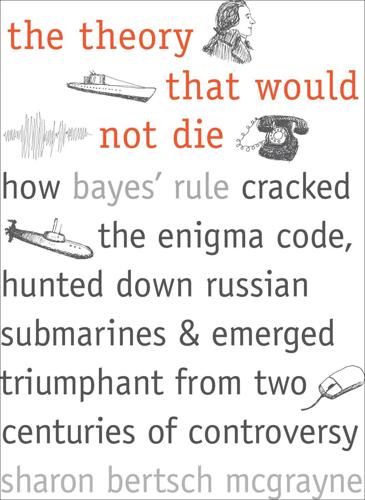
The Theory That Would Not Die: How Bayes' Rule Cracked the Enigma Code, Hunted Down Russian Submarines, and Emerged Triumphant From Two Centuries of Controversy
by
Sharon Bertsch McGrayne
Published 16 May 2011
Price, in a letter to John Canton, A.M.F.R.S. A letter from the late Reverend Mr. Thomas Bayes, F.R.S., to John Canton, M.A. and F.R.S. Author(s): Mr. Bayes and Mr. Price. Philosophical Transactions (1683–1775) (53) 370–418. Royal Society. The original Bayes–Price article. Bebb, ED. (1935) Nonconformity and Social and Economic Life 1660–1800. London: Epworth Press. Bellhouse, David R. (2002) On some recently discovered manuscripts of Thomas Bayes. Historia Mathematica (29) 383–94. ———. (2007a) The Reverend Thomas Bayes, FRS: A biography to celebrate the tercentenary of his birth. Statistical Science (19:1) 3–43.
…
University of Kentucky Press. Dale, Andrew I. (1988) On Bayes’ theorem and the inverse Bernoulli theorem. Historia Mathematica (15) 348–60. ———. (1991) Thomas Bayes’s work on infinite series. Historia Mathematica (18) 312–27. ———. (1999) A History of Inverse Probability from Thomas Bayes to Karl Pearson. 2d ed. Springer. One of the foundational works in the history of probability. ———. (2003) Most Honourable Remembrance: The Life and Work of Thomas Bayes. Springer. With Bellhouse, the main source for Bayes’ life. Daston, Lorraine. (1988) Classical Probability in the Enlightenment. Princeton University Press.
…
The degraded condition of his vault may have contributed to the confusion. Second, the often-reproduced portrait of Thomas Bayes is almost assuredly of someone else named “T. Bayes.” The sketch first appeared in 1936 in History of Life Insurance in its Formative Years by Terence O’Donnell. However, the picture’s caption on page 335 says it is of “Rev. T. Bayes, Improver of the Columnar Method developed by Barrett,” and Barrett did not develop his method until 1810, a half-century after the death of “our” Rev. Thomas Bayes. Bellhouse (2004) first noticed that the portrait’s hairstyle is anachronistic. Sharon North, curator of Textiles and Fashion at the Victoria and Albert Museum, London, agrees: “The hairstyle in this portrait looks very 20th century. . . .
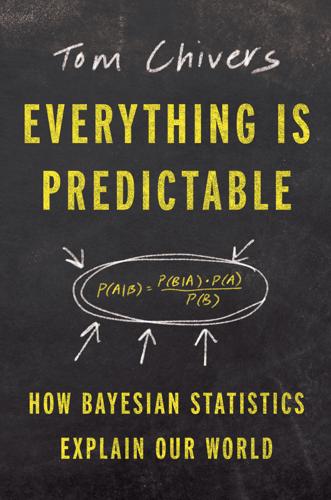
Everything Is Predictable: How Bayesian Statistics Explain Our World
by
Tom Chivers
Published 6 May 2024
Birch, An Account of the Life of John Ward, LL.D., Professor of Rhetoric in Gresham College; F.R.S. and F.S.A. (London: P. Vaillant, 1766), quoted in Bellhouse, “The Reverend Thomas Bayes.” 7. G. A. Barnard and T. Bayes, “Studies in the History of Probability and Statistics: IX. Thomas Bayes’s Essay towards Solving a Problem in the Doctrine of Chances,” Biometrika 45, no. 3/4 (1958): 293–315, https://doi.org/10.2307/2333180. 8. Letters to Thomas Bayes and John Skinner Smith in Ward’s Latin Correspondence, British Library Manuscript, Additional Manuscript 6224, 116. Cited in Bellhouse, “The Reverend Thomas Bayes.” 9. Alexander Gordon, “Peirce, James,” Dictionary of National Biography, 1885–1900, https://en.wikisource.org/wiki/Dictionary_of_National_Biography,_1885-1900/Peirce,_James. 10.
…
John Balguy, Divine Rectitude: Or, a Brief Inquiry Concerning the Moral Perfections of the Deity; Particularly in Respect of Creation and Providence (London: Printed for John Pemberton, at the Buck, over-against St. Dunstan’s Church, Fleetstreet, 1730). 13. Bellhouse, “The Reverend Thomas Bayes,” 10. 14. James Foster, An Essay on Fundamentals in Religion (1720), taken from Unitarian Tracts in Nine Volumes (London: British and Foreign Unitarian Association, 1836). 15. D. Coomer, English Dissent under the Early Hanoverians (London: Epworth Press, 1946), quoted in Bellhouse, “The Reverend Thomas Bayes.” 16. Bellhouse, “The Reverend Thomas Bayes,” 12. 17. Ibid., 13. 18. E. Montague, The Letters of Mrs. Elizabeth Montagu, with Some of the Letters of her Correspondents, vols. 1–4 (1974; London: T.
…
A few minutes on the internet will find you more examples than you could possibly need. There exists, stored on the servers of the University of Minnesota, for reasons I don’t fully understand, a “Bayesian songbook,” containing such wonders as: Thomas Bayes’s Army [The Battle Hymn of Las Fuentes] Words: P. R. Freeman and A. O’Hagan Music: Traditional [“The Battle Hymn of the Republic”] Mine eyes have seen the glory of the Reverend Thomas Bayes, He is stamping out frequentists and their incoherent ways, He has raised his mighty army at the Hotel Las Fuentes, His troops are marching on. Glory, Glory, Probability Glory, Glory, Subjectivity Glory, Glory, on to infinity His troops are marching on!
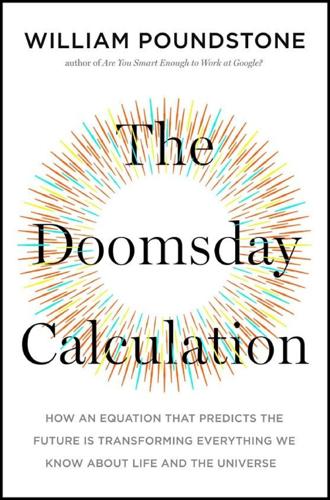
The Doomsday Calculation: How an Equation That Predicts the Future Is Transforming Everything We Know About Life and the Universe
by
William Poundstone
Published 3 Jun 2019
Since the 1940s, “Disgusted of Tunbridge Wells” has been a facetious pseudonym for letters to the editor expressing stodgy views. Tunbridge Wells was nonetheless the birthplace of one of the contemporary world’s most disruptive ideas. Not many traces remain of the town’s onetime minister Thomas Bayes (1701–1761). The Bayes family had made its fortune several generations earlier, in the cutlery business of Sheffield. Thomas Bayes studied theology and logic at the University of Edinburgh. After several years in London, he moved to Tunbridge Wells in 1733 or 1734 and became minister of Mount Sion Chapel. Bayes was a Presbyterian nonconformist, opposing the Church of England and the Book of Common Prayer on grounds vague to nearly all of today’s Presbyterians.
…
This bomb broke apart, and the fragments fell into a swampy area with enough water to soften the impact and spare the conventional explosives. Bomb disposal expert Lieutenant Jack ReVelle was called in to find the pieces. “Until my death,” ReVelle said, “I will never forget hearing my sergeant say, ‘Lieutenant, we found the arm/safe switch.’ And I said, ‘Great.’ He said, ‘Not great. It’s on “arm.”’” “You’re the Product” Thomas Bayes, the nonconformist minister of Tunbridge Wells, England, drew his last breath on April 17, 1761. For reasons not clear he left his life’s greatest achievement filed away, unpublished and unread. It was another mathematically inclined minister, Richard Price, who found Bayes’s manuscript after his death and recognized its importance.
…
Round the decay Of that colossal Wreck, boundless and bare The lone and level sands stretch far away.” This is the sonnet “Ozymandias” (1818) by Romantic poet Percy Bysshe Shelley, husband of Frankenstein author Mary Shelley, daughter of feminist Mary Wollstonecraft, friend of minister Richard Price, promoter of the intellectual property of Thomas Bayes. The theme of “Ozymandias” is that glory is fleeting. Nothing lasts. In the summer of 1969, J. Richard Gott III celebrated his Harvard graduation with a tour of Europe. He visited the supreme monument of Cold War anxiety, the Berlin Wall. Standing in the shadow of the landmark, he contemplated its history and future.

Why Machines Learn: The Elegant Math Behind Modern AI
by
Anil Ananthaswamy
Published 15 Jul 2024
Office of Naval Research: “The Design of an Intelligent Automaton,” Research Trends VI, No. 2 (Summer 1958). GO TO NOTE REFERENCE IN TEXT “Dr. Rosenblatt said he could explain why the machine learned”: “New Navy Device Learns by Doing,” p. 25. GO TO NOTE REFERENCE IN TEXT Thomas Bayes, the eighteenth-century English statistician and minister: “Thomas Bayes,” Quick Info, MacTutor, n.d., mathshistory.st-andrews.ac.uk/Biographies/Bayes/. GO TO NOTE REFERENCE IN TEXT German mathematician Carl Friedrich Gauss: “Normal distribution,” Science & Tech, Britannica, n.d., www.britannica.com/topic/normal-distribution.
…
GO TO NOTE REFERENCE IN TEXT “born in 1701 with probability 0.8”: Stephen M. Stigler, “Richard Price, the First Bayesian,” Statistical Science 33, No. 1 (2018): 117–25. GO TO NOTE REFERENCE IN TEXT Royal Tunbridge Wells in England: “Thomas Bayes: English Theologian and Mathematician,” Science & Tech, Britannica, n.d., www.britannica.com/biography/Thomas-Bayes. GO TO NOTE REFERENCE IN TEXT Bayes and Price were kindred spirits: Stigler, “Richard Price, the First Bayesian,” p. 117. GO TO NOTE REFERENCE IN TEXT Price wrote a letter: “LII. An Essay Towards Solving a Problem in the Doctrine of Chances,” PDF, royalsocietypublishing.org/doi/pdf/10.1098/rstl.1763.0053.
…
Machine learning (ML) is a vast field populated by algorithms that leverage relatively simple math that goes back centuries, math one learns in high school or early in college. There’s, of course, elementary algebra. Another extremely important cornerstone of machine learning is calculus, co-invented by no less a polymath than Isaac Newton. The field also relies heavily on the work of Thomas Bayes, the eighteenth-century English statistician and minister who gave us the eponymous Bayes’s theorem, a key contribution to the field of probability and statistics. The work of German mathematician Carl Friedrich Gauss on the Gaussian distribution (and the bell-shaped curve) also permeates machine learning.

The Laws of Medicine: Field Notes From an Uncertain Science
by
Siddhartha Mukherjee
Published 12 Oct 2015
Thank you for downloading this TED Books eBook. * * * Join our mailing list and get updates on new releases, deals, bonus content and other great books from TED Books and Simon & Schuster. CLICK HERE TO SIGN UP or visit us online to sign up at eBookNews.SimonandSchuster.com To Thomas Bayes (1702–1761), who saw uncertainty with such certainty “Are you planning to follow a career in Magical Laws, Miss Granger?” asked Scrimgeour. “No, I’m not,” retorted Hermione. “I’m hoping to do some good in the world!” J. K. Rowling The learned men of former ages employed a great part of their time and thoughts searching out the hidden causes of distemper, were curious in imagining the secret workmanship of nature and . . . putting all these fancies together, fashioned to themselves systems and hypotheses [that] diverted their enquiries from the true and advantageous knowledge of things.
…
The core logic holds true whether you are trying to forecast tomorrow’s weather or seeking to predict rises and falls in the stock market. It is a universal feature of all tests. .... The man responsible for this strange and illuminating idea was neither a doctor nor a scientist by trade. Born in Hertfordshire in 1702, Thomas Bayes was a clergyman and philosopher who served as the minister at the chapel in Tunbridge Wells, near London. He published only two significant papers in his lifetime—the first, a defense of God, and the second, a defense of Newton’s theory of calculus (it was a sign of the times that in 1732, a clergyman found no cognitive dissonance between these two efforts).

The Book of Why: The New Science of Cause and Effect
by
Judea Pearl
and
Dana Mackenzie
Published 1 Mar 2018
REVEREND BAYES AND THE PROBLEM OF INVERSE PROBABILITY Thomas Bayes, after whom I named the networks in 1985, never dreamed that a formula he derived in the 1750s would one day be used to identify disaster victims. He was concerned only with the probabilities of two events, one (the hypothesis) occurring before the other (the evidence). Nevertheless, causality was very much on his mind. In fact, causal aspirations were the driving force behind his analysis of “inverse probability.” A Presbyterian minister who lived from 1702 to 1761, the Reverend Thomas Bayes appears to have been a mathematics geek. As a dissenter from the Church of England, he could not study at Oxford or Cambridge and was educated instead at the University of Scotland, where he likely picked up quite a bit of math.
…
(Twenty years earlier, theologian Thomas Woolston had gone to prison for blasphemy for writing such things.) Hume’s main point was that inherently fallible evidence cannot overrule a proposition with the force of natural law, such as “Dead people stay dead.” FIGURE 3.1. Title page of the journal where Thomas Bayes’s posthumous article on inverse probability was published and the first page of Richard Price’s introduction. For Bayes, this assertion provoked a natural, one might say Holmesian question: How much evidence would it take to convince us that something we consider improbable has actually happened?
…
If we know the length of the table and it is perfectly smooth and flat, this is a very easy question (Figure 3.2, top). For example, on a twelve-foot snooker table, the probability of the ball stopping within a foot of the end would be 1/12. On an eight-foot billiard table, the probability would be 1/8. FIGURE 3.2. Thomas Bayes’s pool table example. In the first version, a forward-probability question, we know the length of the table and want to calculate the probability of the ball stopping within x feet of the end. In the second, an inverse-probability question, we observe that the ball stopped x feet from the end and want to estimate the likelihood that the table’s length is L.
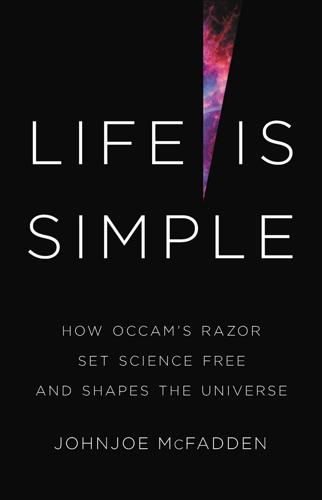
Life Is Simple: How Occam's Razor Set Science Free and Shapes the Universe
by
Johnjoe McFadden
Published 27 Sep 2021
Bertrand Russell, 19141 In April 1761, thirty-four years after the death of Isaac Newton and 118 years before the birth of Albert Einstein, Richard Price (1723–91), the non-conformist Protestant minister, moral philosopher and mathematician, examined the unpublished papers of his recently deceased friend and mathematician Thomas Bayes (1702–61). Bayes had been a modestly successful scientist. Thirty years earlier, he had rushed to the defence of Isaac Newton’s mathematical method known as calculus, which had been attacked in an article addressed to ‘an infidel mathematician’ by the Irish philosopher and Roman Catholic bishop George Berkeley who feared that Newton’s mechanistic science would undermine religious faith.
…
Chance, or probability, was a hot topic in the eighteenth century as the insurance business in England and Scotland had made a fortune on its ability to put a price on the risk of death, shipwreck, damage, illness, injury or any misfortune. Several of Price’s family were actuaries and, ten years later, he would write his own book on statistical approaches to actuarial calculations. However, in 1761, he had never seen anything like the statistics described in Bayes’s paper. Thomas Bayes is one of the most elusive heroes of our story. We hardly know him any better than we do William of Occam. There is a widely used portrait of a rather stern dark-haired man in clerical gown and collar that is often claimed to be of Bayes, yet the attribution is, at best, doubtful.2 He was born in 1702, probably in Hertfordshire, the son of another non-conformist minister, Joshua Bayes.
…
However, the town had thereafter earned something of a salacious reputation and, in his The Debt to Pleasure3 published in 1685, John Wilmot, Earl of Rochester had described it as ‘The Rendevouz of Fooles, Buffoones, and Praters/ Cuckolds, Whores, Citizens, their Wives and Daughters’. The Reverend Thomas Bayes was not a particularly popular preacher in the ‘Rendevous of Fooles’, but he did establish a reputation as a scholar and was even invited to demonstrate the melting of ice to ‘Three Natives of the East Indies’ who visited in 1740. Probably because of his defence of Newton’s calculus, Bayes was elected to the Royal Society in 1742, but published no further mathematical work before his death in 1761.

The Drunkard's Walk: How Randomness Rules Our Lives
by
Leonard Mlodinow
Published 12 May 2008
One of the paranoid delusions the former employer’s psychiatrist pointed to was the student’s alleged invention of a fictitious eighteenth-century minister. In particular, the psychiatrist scoffed at the student’s claim that this minister was an amateur mathematician who had created in his spare moments a bizarre theory of probability. The minister’s name, according to the student, was Thomas Bayes. His theory, the student asserted, described how to assess the chances that some event would occur if some other event also occurred. What are the chances that a particular student would be the subject of a vast secret conspiracy of experimental psychologists? Admittedly not huge. But what if one’s wife speaks one’s thoughts before one can utter them and co-workers foretell your professional fate over drinks in casual conversation?
…
And he presented the court with a mumbo jumbo of formulas and calculations regarding his hypothesis, concluding that the additional evidence meant that the probability was 999,999 in 1 million that he was right about the conspiracy. The enemy psychiatrist claimed that this mathematician-minister and his theory were figments of the student’s schizophrenic imagination. The student asked the professor to help him refute that claim. The professor agreed. He had good reason, for Thomas Bayes, born in London in 1701, really was a minister, with a parish at Tunbridge Wells. He died in 1761 and was buried in a park in London called Bunhill Fields, in the same grave as his father, Joshua, also a minister. And he indeed did invent a theory of “conditional probability” to show how the theory of probability can be extended from independent events to events whose outcomes are connected.
…
The sad part of this story is not just the middle-aged schizophrenic himself, but the medical and legal team on the other side. It is unfortunate that some people suffer from schizophrenia, but even though drugs can help to mediate the illness, they cannot battle ignorance. And ignorance of the ideas of Thomas Bayes, as we shall see, resides at the heart of many serious mistakes in both medical diagnosis and legal judgment. It is an ignorance that is rarely addressed during a doctor’s or a lawyer’s professional training. We also make Bayesian judgments in our daily lives. A film tells the story of an attorney who has a great job, a charming wife, and a wonderful family.

Algorithms to Live By: The Computer Science of Human Decisions
by
Brian Christian
and
Tom Griffiths
Published 4 Apr 2016
Reasoning Backward with the Reverend Bayes If we be, therefore, engaged by arguments to put trust in past experience, and make it the standard of our future judgement, these arguments must be probable only. —DAVID HUME More than 250 years ago, the question of making predictions from small data weighed heavily on the mind of the Reverend Thomas Bayes, a Presbyterian minister in the charming spa town of Tunbridge Wells, England. If we buy ten tickets for a new and unfamiliar raffle, Bayes imagined, and five of them win prizes, then it seems relatively easy to estimate the raffle’s chances of a win: 5/10, or 50%. But what if instead we buy a single ticket and it wins a prize?
…
“The Unreasonable Effectiveness of Data”: The talk was derived from Halevy, Norvig, and Pereira, “The Unreasonable Effectiveness of Data.” “these arguments must be probable only”: An Enquiry Concerning Human Understanding, §IV, “Sceptical Doubts Concerning the Operations of the Understanding.” Bayes’s own history: Our brief biography draws on Dale, A History of Inverse Probability, and Bellhouse, “The Reverend Thomas Bayes.” in either 1746, ’47, ’48, or ’49: Bayes’s legendary paper, undated, had been filed between a pair of papers dated 1746 and 1749. See, e.g., McGrayne, The Theory That Would Not Die. defense of Newton’s newfangled “calculus”: An Introduction to the Doctrine of fluxions, and Defence of the Mathematicians against the Objections of the Author of the analyst, so far as they are assigned to affect their general methods of Reasoning.
…
Communications of the ACM 12, no. 6 (1969): 349–353. Belew, Richard K. Finding Out About: A Cognitive Perspective on Search Engine Technology and the WWW. Cambridge, UK: Cambridge University Press, 2000. Bell, Aubrey F. G. In Portugal. New York: John Lane, 1912. Bellhouse, David R. “The Reverend Thomas Bayes, FRS: A Biography to Celebrate the Tercentenary of His Birth.” Statistical Science 19 (2004): 3–43. Bellman, Richard. Dynamic Programming. Princeton, NJ: Princeton University Press, 1957. ______. “A Problem in the Sequential Design of Experiments.” Sankhyā: The Indian Journal of Statistics 16 (1956): 221–229.
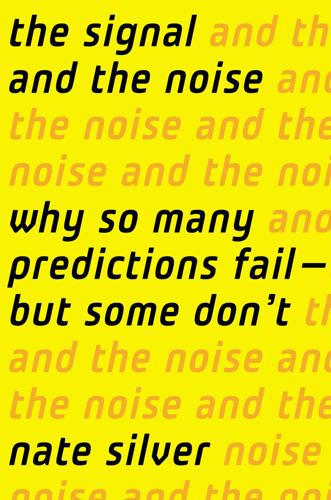
The Signal and the Noise: Why So Many Predictions Fail-But Some Don't
by
Nate Silver
Published 31 Aug 2012
The key is in determining whether the patterns represent noise or signal. But although there isn’t any one particular key to why Voulgaris might or might not bet on a given game, there is a particular type of thought process that helps govern his decisions. It is called Bayesian reasoning. The Improbable Legacy of Thomas Bayes Thomas Bayes was an English minister who was probably born in 1701—although it may have been 1702. Very little is certain about Bayes’s life, even though he lent his name to an entire branch of statistics and perhaps its most famous theorem. It is not even clear that anybody knows what Bayes looked like; the portrait of him that is commonly used in encyclopedia articles may have been misattributed.19 What is in relatively little dispute is that Bayes was born into a wealthy family, possibly in the southeastern English county of Hertfordshire.
…
That works out to 150 such streaks per season between the thirty NBA teams combined. 19. D. R. Bellhouse, “The Reverend Thomas Bayes FRS: A Biography to Celebrate the Tercentenary of His Birth,” Statistical Science, 19, 1, pp. 3–43; 2004. http://www2.isye.gatech.edu/~brani/isyebayes/bank/bayesbiog.pdf. 20. Bayes may also have been an Arian, meaning someone who followed the teachings of the early Christian leader Arias and who regarded Jesus Christ as the divine son of God rather than (as most Christians then and now believe) a direct manifestation of God. 21. Thomas Bayes, “Divine Benevolence: Or an Attempt to Prove That the Principal End of the Divine Providence and Government Is the Happiness of His Creatures.” http://archive.org/details/DivineBenevolenceOrAnAttemptToProveThatThe. 22.
…
There are many reasons for it—some having to do with our psychological biases, some having to do with common methodological errors, and some having to do with misaligned incentives. Close to the root of the problem, however, is a flawed type of statistical thinking that these researchers are applying. FIGURE 8-6: A GRAPHICAL REPRESENTATION OF FALSE POSITIVES When Statistics Backtracked from Bayes Perhaps the chief intellectual rival to Thomas Bayes—although he was born in 1890, almost 120 years after Bayes’s death—was an English statistician and biologist named Ronald Aylmer (R. A.) Fisher. Fisher was a much more colorful character than Bayes, almost in the English intellectual tradition of Christopher Hitchens. He was handsome but a slovenly dresser,42 always smoking his pipe or his cigarettes, constantly picking fights with his real and imagined rivals.
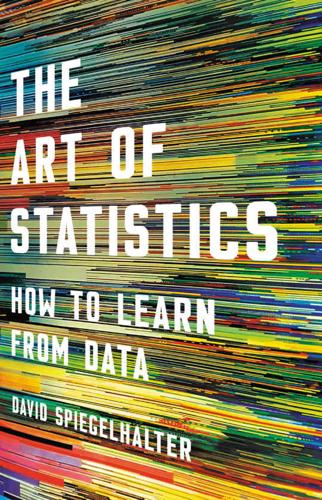
The Art of Statistics: How to Learn From Data
by
David Spiegelhalter
Published 2 Sep 2019
This has only come to prominence in the last fifty years, but its basic principles go back somewhat further, in fact to the Reverend Thomas Bayes, a Nonconformist minister turned probability theorist and philosopher from Tunbridge Wells, who died in 1761.* The good news is that the Bayesian approach opens fine new possibilities for making the most of complex data. The bad news is that it means putting aside almost everything you may have learned in this book and elsewhere about estimation, confidence intervals, P-values, hypothesis testing, and so on. What Is the Bayesian Approach? Thomas Bayes’ first great contribution was to use probability as an expression of our lack of knowledge about the world or, equivalently, our ignorance about what is currently going on.
…
Expected frequencies make Bayesian analysis reasonably straightforward for simple situations that involve only two hypotheses, say about whether someone does or does not have a disease, or has or has not committed an offence. However, things get trickier when we want to apply the same ideas to drawing inferences about unknown quantities that might take on a range of values, such as parameters in statistical models. The Reverend Thomas Bayes’ original paper in 1763 set out to answer a very basic question of this nature: given something has happened or not happened on a known number of similar occasions, what probability should we give to it happening next time?* For example, if a thumbtack has been flipped 20 times and it has come down point-up 15 times and point-down 5 times, what is the probability of it landing point-down next time?
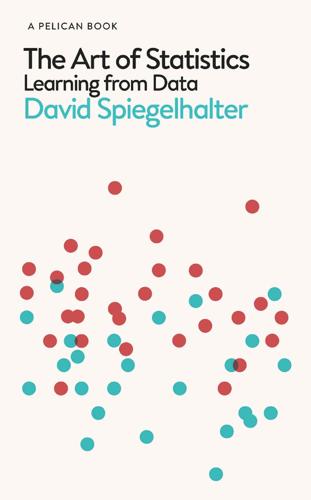
The Art of Statistics: Learning From Data
by
David Spiegelhalter
Published 14 Oct 2019
This has only come to prominence in the last fifty years, but its basic principles go back somewhat further, in fact to the Reverend Thomas Bayes, a Nonconformist minister turned probability theorist and philosopher from Tunbridge Wells, who died in 1761.fn1 The good news is that the Bayesian approach opens fine new possibilities for making the most of complex data. The bad news is that it means putting aside almost everything you may have learned in this book and elsewhere about estimation, confidence intervals, P-values, hypothesis testing, and so on. What Is the Bayesian Approach? Thomas Bayes’ first great contribution was to use probability as an expression of our lack of knowledge about the world or, equivalently, our ignorance about what is currently going on.
…
Expected frequencies make Bayesian analysis reasonably straightforward for simple situations that involve only two hypotheses, say about whether someone does or does not have a disease, or has or has not committed an offence. However, things get trickier when we want to apply the same ideas to drawing inferences about unknown quantities that might take on a range of values, such as parameters in statistical models. The Reverend Thomas Bayes’ original paper in 1763 set out to answer a very basic question of this nature: given something has happened or not happened on a known number of similar occasions, what probability should we give to it happening next time?fn4 For example, if a thumbtack has been flipped 20 times and it has come down point-up 15 times and point-down 5 times, what is the probability of it landing point-down next time?

The Rationalist's Guide to the Galaxy: Superintelligent AI and the Geeks Who Are Trying to Save Humanity's Future
by
Tom Chivers
Published 12 Jun 2019
Robert Nozick, ‘Newcomb’s problem and two principles of choice’, Essays in Honor of Carl G. Hempel (Springer Netherlands, 1969) http://faculty.arts.ubc.ca/rjohns/nozick_newcomb.pdf 7. Eliezer Yudkowsky, ‘Timeless Decision Theory’, 2010 https://intelligence.org/files/TDT.pdf 19: Bayes’ theorem and optimisation 1. https://en.wikipedia.org/wiki/Thomas_Bayes 2. Thomas Bayes, An Essay towards solving a Problem in the Doctrine of Chances, 1763 3. ‘An intuitive explanation of Bayes’ theorem’, LessWrong sequences, 1 January 2003 https://www.readthesequences.com/An-Intuitive-Explanation-Of-Bayess-Theorem 4. Ward Casscells, Arno Schoenberger and Thomas Graboys, ‘Interpretation by physicians of clinical laboratory results,’ New England Journal of Medicine, vol. 299, 1978, pp. 999–1001 5.
…
When he talks about rationality, he is talking about Bayes; the project of improving human rationality is a project of making humans better Bayesians. The theorem is (he says, and decision theory agrees) absolutely central to what good decision-making involves. When you have evidence for something, that evidence allows you to shift your beliefs only as far – no more, no less – as the distance dictated by Bayes. The Reverend Thomas Bayes is buried, rather appropriately, a few hundred yards from the offices of the Royal Statistical Society, in Shoreditch, east London. Bayes, a somewhat obscure eighteenth-century Presbyterian minister with a sideline in mathematics, wrote a couple of well-received books in his lifetime, one on theology, the other defending an aspect of Newton’s calculus from criticism by George Berkeley.
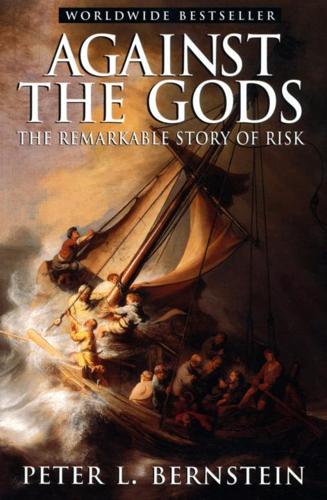
Against the Gods: The Remarkable Story of Risk
by
Peter L. Bernstein
Published 23 Aug 1996
With that innocent-sounding assertion, Bernoulli explained why King Midas was an unhappy man, why people tend to be risk-averse, and why prices must fall if customers are to be persuaded to buy more. Bernoulli's statement stood as the dominant paradigm of rational behavior for the next 250 years and laid the groundwork for modern principles of investment management. Almost exactly one hundred years after the collaboration between Pascal and Fermat, a dissident English minister named Thomas Bayes made a striking advance in statistics by demonstrating how to make better-informed decisions by mathematically blending new information into old information. Bayes's theorem focuses on the frequent occasions when we have sound intuitive judgments about the probability of some event and want to understand how to alter those judgments as actual events unfold.
…
Questions put in this manner form the subject matter of what is known as inverse probability: with 12 defective pins out of 100,000, what is the probability that the true average ratio of defectives to the total is 0.01%? One of the most effective treatments of such questions was proposed by a minister named Thomas Bayes, who was born in 1701 and lived in Kent." Bayes was a Nonconformist; he rejected most of the ceremonial rituals that the Church of England had retained from the Catholic Church after their separation in the time of Henry VIII. Not much is known about Bayes, even though he was a Fellow of the Royal Society.
…
The most exciting feature of all the achievements mentioned in this chapter is the daring idea that uncertainty can be measured. Uncertainty means unknown probabilities; to reverse Hacking's description of certainty, we can say that something is uncertain when our information is correct and an event fails to happen, or when our information is incorrect and an event does happen. Jacob Bernoulli, Abraham de Moivre, and Thomas Bayes showed how to infer previously unknown probabilities from the empirical facts of reality. These accomplishments are impressive for the sheer mental agility demanded, and audacious for their bold attack on the unknown. When de Moivre invoked ORIGINAL DESIGN, he made no secret of his wonderment at his own accomplishments.
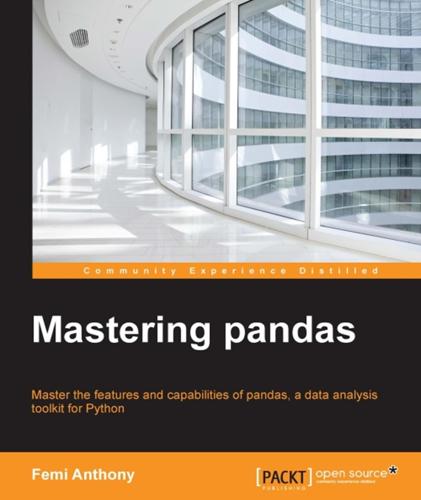
Mastering Pandas
by
Femi Anthony
Published 21 Jun 2015
The various topics that will be discussed are as follows: Introduction to Bayesian statistics Mathematical framework for Bayesian statistics Probability distributions Bayesian versus Frequentist statistics Introduction to PyMC and Monte Carlo simulation Illustration of Bayesian inference – Switchpoint detection Introduction to Bayesian statistics The field of Bayesian statistics is built on the work of Reverend Thomas Bayes, an 18th century statistician, philosopher, and Presbyterian minister. His famous Bayes' theorem, which forms the theoretical underpinnings for Bayesian statistics, was published posthumously in 1763 as a solution to the problem of inverse probability. For more details on this topic, refer to http://en.wikipedia.org/wiki/Thomas_Bayes. Inverse probability problems were all the rage in the early 18th century and were often formulated as follows: Suppose you play a game with a friend.
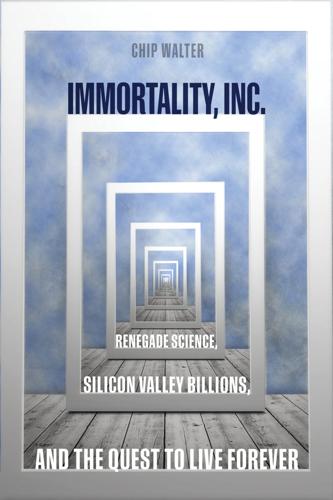
Immortality, Inc.
by
Chip Walter
Published 7 Jan 2020
There could be no doubt: Smart machines was where the end of The End lay. 27 | THE NEW ORACLES In early 2016, when she became Calico Labs’ chief computing officer, the views and aspirations of Raymond Kurzweil did not inhabit the mind of Daphne Koller. This wasn’t because she shunned Kurzweil, or digits, algorithms, or computer code; far from it. She loved them all. It was just that Kurzweil wasn’t her favorite when it came to the stratagems of machine learning and artificial intelligence. Bridge Four wasn’t her thing. Her inspiration was Thomas Bayes, an 18th-century mathematician and Presbyterian minister. She had explored his work and theories in the 1990s, and then used them to develop some of the most advanced artificial intelligence algorithms in the world. Before joining Calico, Koller knew she could write her own ticket at any of Silicon Valley’s great Cloud makers: Google, Facebook, Apple.
…
But did she really want to create software that made better Twitter feeds, or cool faces on Snapchat, or yet another product that piled up more of the planet’s digital ad revenues? In the sprawling world of Google, she would be a blip: one more very smart human in a sea of geeks. But Calico was different. She had never forgotten Steve Jobs’s grand goal: “Make a dent in the universe.” At Calico, maybe she could make a dent—save lives, perhaps millions—even her own. Thomas Bayes would have appreciated Koller’s interest in saving lives, being both a Presbyterian minister and a devoted supporter of the humanist philosophies that called for the rational improvement of the human race—also the foundation of transhumanism. The mathematician’s work had been largely forgotten when Koller first began exploring it.

How Many Friends Does One Person Need? Dunbar’s Number and Other Evolutionary Quirks
by
Robin Dunbar
and
Robin Ian MacDonald Dunbar
Published 2 Nov 2010
In 1764, the Reverend Thomas Bayes, an English Presbyterian minister and Fellow of the Royal Society, published a posthumous paper in which he sketched out a theory of probability based on confidence. It was an elegantly simple theory based on a single mathematical theorem that could be applied under any circumstances. But later mathematicians baulked at his ideas, preferring something that was more firmly rooted in observable facts: they argued that probability is better defined as something about the frequencies with which events (such as tosses of a coin) happen. Thomas Bayes and his theorem fell into obscurity.
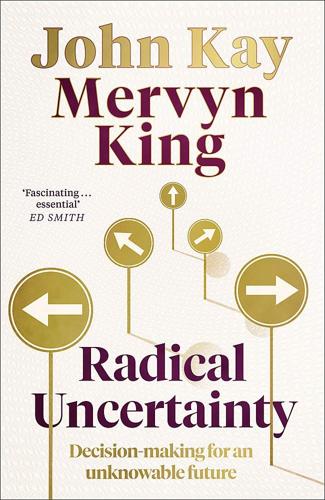
Radical Uncertainty: Decision-Making for an Unknowable Future
by
Mervyn King
and
John Kay
Published 5 Mar 2020
But if there were to be only five games, the Marquis would certainly have lost – the result of the fifth game would be irrelevant, and it might not even have been played. It pays to go Bayes The final step in the development of the new theory of probability was the achievement of an unlikely hero – an obscure eighteenth-century country Presbyterian clergyman in England. The Reverend Thomas Bayes is by chance buried in what is now the centre of London’s financial district. Among his papers he left a theorem that is one of the most widely taught ideas in statistics today. 13 Unknown in life Bayes may have been, but his name is known today throughout the world with branches of statistics and economics named after him.
…
And it is the pervasive nature of radical uncertainty which is the source of the problem. 20 THE USE AND MISUSE OF MODELS Any business craving of the leader, however foolish, will be quickly supported by detailed rates of return and strategic studies prepared by his troops. —WARREN BUFFETT 1 I n the eighteenth century there were country clergymen of exceptional intelligence who had time on their hands. They benefited from a secure reference narrative. Thomas Bayes was one; Thomas Malthus another. In 1798, Malthus set out what might be regarded as the first growth model in economics. He hypothesised that population tended to grow exponentially, as a result of what he coyly termed ‘the passions’, while food supplies could grow only linearly. The rising population would put pressure on food supplies, and then the resulting destitution would reduce that population.
…
The model of the lone entrepreneur – the poor boy with a brilliant business idea who rises single-handedly from poverty; the isolated scholar scribbling brilliant ideas in a garret or country vicarage – is largely mythological. There are contrary examples. Thomas Edison was fired from the only two jobs he held, the first as telegraph boy for Western Electric and the other as CEO of the corporation which is now General Electric. The Reverend Thomas Bayes died unknown. But such examples are few, and to find them we have to go some way back in history. The most common profile of the successful entrepreneur today is the individual who draws on his or her past experience in a larger organisation, and works from inception with a team of like-minded individuals.
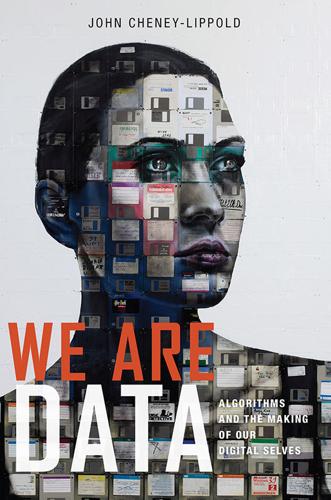
We Are Data: Algorithms and the Making of Our Digital Selves
by
John Cheney-Lippold
Published 1 May 2017
A composite Quantcast image from a 2008 methodology white paper explains how its ‘gender’ inference model works across websites. Source: Quantcast, “Quantcast Methodology Overview,” 2008, www.quantcast.com [no longer available]. The manner by which this model “gets smarter” is best explained by the statistical method of Bayesian probability. Thomas Bayes was an amateur mathematician whose 1763 posthumously published “Essay towards Solving a Problem in the Doctrine of Chances” asserted, among other things, a simple fact: we update a phenomenon’s meaning when new data about that phenomenon arrives.35 Media scholar Finn Brunton offers us an excellent exposition: Imagine someone new to this world seeing the first sunset of her life.
…
Michael Zimmer, “The Externalities of Search 2.0: The Emerging Privacy Threats When the Drive for the Perfect Search Engine Meets Web 2.0,” First Monday 13, no. 3 (2008), http://firstmonday.org. 31. Quantcast, “Understanding Digital Audience Measurement,” 2014, www.quantcast.com. 32. Ibid. 33. Interview with anonymous data engineer, February 9, 2011. 34. Quantcast, “Quantcast Methodology Overview,” 2008, www.quantcast.com [no longer available]. 35. Thomas Bayes and Richard Price, “An Essay towards Solving a Problem in the Doctrine of Chances, by the Late Rev. Mr. Bayes, F.R.S. Communicated by Mr. Price, in a Letter to John Canton, A.M.F.R.S.,” Philosophical Transactions (1683–1775) 53 (1763): 370–418. 36. Finn Brunton, Spam: A Shadow History of the Internet (Cambridge, MA: MIT Press, 2013), 135. 37.
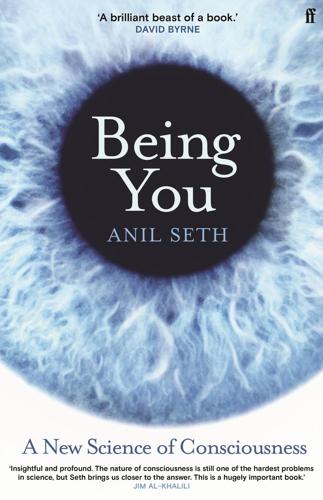
Being You: A New Science of Consciousness
by
Anil Seth
Published 29 Aug 2021
C. (2018), ‘Prior object-knowledge sharpens properties of early visual feature detectors’, Scientific Reports, 8:10853. Used with permission of the authors and under a Creative Commons Attribution 4.0 International License, with thanks to Christoph Teufel. 5 The Wizard of Odds The Reverend Thomas Bayes (1702–1761) – a Presbyterian minister, philosopher, and statistician, who lived much of his life in Tunbridge Wells, in southern England – never got around to publishing the theorem that immortalised his name. His ‘Essay towards Solving a Problem in the Doctrine of Chances’ was presented to the Royal Society in London two years after his death by fellow preacher-philosopher Richard Price, and much of the mathematical heavy lifting was done later on by the French mathematician Pierre-Simon Laplace.
…
— Let’s return to our imagined brain, quiet and dark inside its skull, trying to figure out what’s out there in the world. We can now recognise this challenge as an ideal opportunity to invoke Bayesian inference. When the brain is making best guesses about the causes of its noisy and ambiguous sensory signals, it is following the principles of the Reverend Thomas Bayes. Perceptual priors can be encoded at many levels of abstraction and flexibility. These range from very general and relatively fixed priors such as ‘light comes from above’ to situation-specific priors like ‘the approaching furry object is a gorilla’. Likelihoods in the brain encode mappings from potential causes to sensory signals.

The Irrational Economist: Making Decisions in a Dangerous World
by
Erwann Michel-Kerjan
and
Paul Slovic
Published 5 Jan 2010
This chapter explores a two-part conjecture: (1) After the occurrence of a virgin risk, people will overestimate the probability of another occurrence in the near future; (2) by contrast, after an experienced risk occurs, people will under-update their assessment of another event occurring soon. THE INABILITY TO USE BAYESIAN UPDATING IN EVERYDAY PRACTICE Risks are often posited to have an unknown true probability. The textbook model for how to proceed employs Bayes’ Rule (after eighteenth-century British mathematician Thomas Bayes), which shows mathematically how people should rationally change their existing beliefs about something in light of new evidence. Individuals use information available beforehand to form a so-called prior belief about the probability that an event will occur in a given period. New evidence about the risk is captured in something called a likelihood function, which expresses how plausible the evidence is given each possible value of the probability.
…
Anxiety Arrow, Ken Arthur Andersen Assets Asteroid and Comet Impact Hazards Group (NASA) Asteroid explosions, risk of At War with the Weather (Kunreuther and Michel-Kerjan) Attention deficit disorder Awareness, behavioral change and Bali Action Plan (2007) Bargaining games. See also Game Theory; Theory of Games; Ultimatum Games Batson, Daniel Bayes, Thomas Bayes’ Rule Bayesian updating Behavior acceptable awareness and collective Behavior (continued) decision making and descriptive models of individual learned managerial market motivating myopic neuroscience and rational social uncertainty/risk and Behavioral biases Behavioral data, linking(fig.)

Predictive Analytics: The Power to Predict Who Will Click, Buy, Lie, or Die
by
Eric Siegel
Published 19 Feb 2013
The predictions were generated from machine learning across 50 million learning cases, each depicting a micro-lesson from history of the form, “User Mary was shown ad A and she did click it” (a positive case) or “User John was shown ad B and he did not click it” (a negative case). The learning technology employed to pick the best ad for each user was a Naïve Bayes model. Reverend Thomas Bayes was an eighteenth-century mathematician, and the “Naïve” part means that we take a very smart man’s ideas and compromise them in a way that simplifies yet makes their application feasible, resulting in a practical method that’s often considered good enough at prediction, and scales to the task at hand.
…
Apple Mac Apple Siri Argonne National Laboratory Arizona Petrified Forest National Park Arizona State University artificial intelligence (AI) about Amazon.com Mechanical Turk mind-reading technology possibility of, the Watson computer and Asimov, Isaac astronomy AT&T Research BellKor Netflix Prize teams Australia Austria automobile insurance crashes, predicting credit scores and accidents driver inatentiveness, predicting fraud predictions for Averitt aviation incidents Aviva Insurance (UK) AWK computer language B backtesting. See also test data Baesens, Ben bagging (bootstrap aggregating) Bangladesh Barbie dolls Bayes, Thomas (Bayes Network) Beane, Billy Beano Beaux, Alex behavioral predictors Bella Pictures BellKor BellKor Netflix Prize teams Ben Gurion University (Israel) Bernstein, Peter Berra, Yogi Big Bang Theory, The Big Bang theory Big Brother BigChaos team “big data” movement billing errors, predicting black box trading Black Swan, The (Taleb) blogs and blogging anxiety, predicting from entries collective intelligence and data glut and content in LiveJournal mood prediction research via nature of Blue Cross Blue Shield of Tennessee BMW BNSF Railway board games, predictive play of Bohr, Niels book titles, testing Bowie, David brain activity, predicting Brandeis, Louis Brasil Telecom (Oi) breast cancer, predicting Brecht, Bertolt Breiman, Leo Brigham Young University British Broadcasting Corporation (BBC) Brobst, Stephen Brooks, Mel Brynjolfsson, Eric buildings, predicting fault in Bullard, Ben burglaries, predicting business rules, decision trees and buying behavior, predicting C Cage, Nicolas Canadian Automobile Association Canadian Tire car crashes and harm, predicting CareerBuilder Carlin, George Carlson, Gretchen Carnegie Mellon University CART decision trees Castagno, Davide causality cell phone industry consumer behavior and dropped calls, predicting GPS data and location predicting Telenor (Norway) CellTel (African telecom) Central Tables.

Human Compatible: Artificial Intelligence and the Problem of Control
by
Stuart Russell
Published 7 Oct 2019
Roughly speaking, Bayesian networks are the probabilistic cousins of propositional logic. There are also probabilistic cousins of first-order logic, including Bayesian logic58 and a wide variety of probabilistic programming languages. Bayesian networks and Bayesian logic are named after the Reverend Thomas Bayes, a British clergyman whose lasting contribution to modern thought—now known as Bayes’ theorem—was published in 1763, shortly after his death, by his friend Richard Price.59 In its modern form, as suggested by Laplace, the theorem describes in a very simple way how a prior probability—the initial degree of belief one has in a set of possible hypotheses—becomes a posterior probability as a result of observing some evidence.
…
Courcier, 1814). 58. Bayesian logic described in a fairly nontechnical way: Stuart Russell, “Unifying logic and probability,” Communications of the ACM 58 (2015): 88–97. The paper draws heavily on the PhD thesis research of my former student Brian Milch. 59. The original source for Bayes’ theorem: Thomas Bayes and Richard Price, “An essay towards solving a problem in the doctrine of chances,” Philosophical Transactions of the Royal Society of London 53 (1763): 370–418. 60. Technically, Samuel’s program did not treat winning and losing as absolute rewards; by fixing the value of material to be positive; however, the program generally tended to work towards winning. 61.
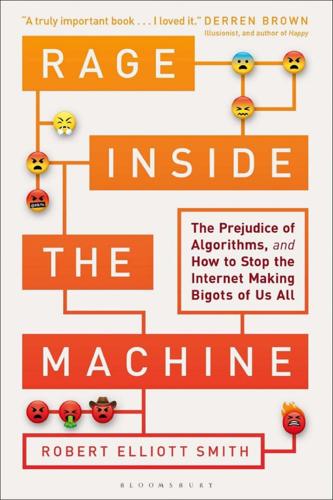
Rage Inside the Machine: The Prejudice of Algorithms, and How to Stop the Internet Making Bigots of Us All
by
Robert Elliott Smith
Published 26 Jun 2019
In each case, reasoning from big data statistics (about your online profile, and those of many other people) are determining probabilities that are used to derive a desirable outcome. But most of these algorithms also involve an additional probability rule, which was furnished in 1761 by London Presbyterian minister Thomas Bayes. Little is known about Thomas Bayes other than he was a Fellow of the Royal Society and he wrote two papers on mathematics, one of which, Essay Towards Solving a Problem in the Doctrine of Chances (published after his death in 1761), laid out the final foundational rule of modern probability theory. Bayes’ rule follows trivially from the event-size-and-zoom-based arguments presented below, as shown in Figure 3.3.
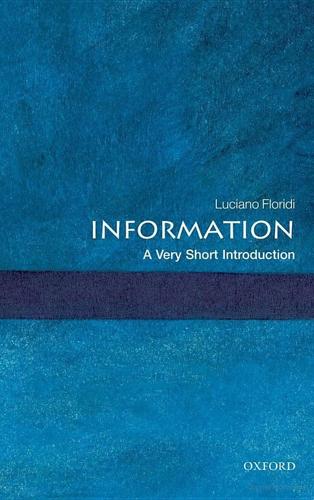
Information: A Very Short Introduction
by
Luciano Floridi
Published 25 Feb 2010
Jill has just identified a way of acquiring (learning) the missing piece of information that will help her to adopt the right strategy: if the chance that some emails in the quarantine folder might not be infected is very low, she will check it only occasionally. How could she obtain such a missing piece of information? The answer is by using a Bayesian approach. Thomas Bayes (1702-1761) was a Presbyterian minister and English mathematician whose investigations into probability, published posthumously, led to what is now known as Bayes' theorem and a new branch of applications of probability theory. The theorem calculates the posterior probability of an eventA given event B (that is, P(AIB) on the basis of the prior probability ofA (that is, P(A)).

The Great Mental Models: General Thinking Concepts
by
Shane Parrish
Published 22 Nov 2019
What is it and how can I use it to my advantage? There are three important aspects of probability that we need to explain so you can integrate them into your thinking to get into the ballpark and improve your chances of catching the ball: Bayesian thinking Fat-tailed curves Asymmetries Thomas Bayes and Bayesian thinking: Bayes was an English minister in the first half of the 18th century, whose most famous work, “An Essay Toward Solving a Problem in the Doctrine of Chances”, was brought to the attention of the Royal Society by his friend Richard Price in 1763—two years after his death. The essay concerned how we should adjust probabilities when we encounter new data, and provided the seeds for the great mathematician Pierre Simon Laplace to develop what we now call Bayes’s Theorem.

Statistics in a Nutshell
by
Sarah Boslaugh
Published 10 Nov 2012
Another example of using Bayes’ theorem to calculate the probability of disease, given a positive test; note the lower rate of true positives, due to a lower rate of disease in the population In this example, less than one third of the positives are true positives. The Reverend Thomas Bayes Bayes’ theorem was developed by a British Nonconformist minister, the Reverend Thomas Bayes (1702–1761). Bayes studied logic and theology at the University of Edinburgh and earned his livelihood as a minister in Holborn and Tunbridge Wells, England. However, his fame today rests on his theory of probability, which was developed in his essay, published after his death by the Royal Society of London.
…
A a priori, Blocking and the Latin Square, Glossary of Statistical Terms hypothesis, Glossary of Statistical Terms information, Blocking and the Latin Square absolute frequencies, Frequency Tables, Bar Charts–Bar Charts absolute value, Laws of Arithmetic–Laws of Arithmetic, Glossary of Statistical Terms abstract, Writing the Article, Evaluating the Whole Article critiquing in articles, Evaluating the Whole Article writing, Writing the Article Access, for data management, Spreadsheets and Relational Databases actions, Decision Analysis Age of Information, statistics in, Statistics in the Age of Information algebra, linear, Relationships Between Continuous Variables Alpha (α), Hypothesis Testing, Glossary of Statistical Terms definition of, Glossary of Statistical Terms probability of Type I error, Hypothesis Testing alternate form method, Reliability of a Composite Test American Standard Code for Information Interchange (ASCII), String and Numeric Data Analysis of Covariance (ANCOVA), ANCOVA–ANCOVA Analysis of Variance (ANOVA), The t-Test, Introduction to Regression and ANOVA, Analysis of Variance (ANOVA)–Analysis of Variance (ANOVA), One-Way ANOVA–One-Way ANOVA, Post Hoc Tests–Post Hoc Tests, Factorial ANOVA–Three-Way ANOVA, Two-Way ANOVA–Two-Way ANOVA, Three-Way ANOVA–Three-Way ANOVA, ANOVA about, Introduction to Regression and ANOVA, Analysis of Variance (ANOVA)–Analysis of Variance (ANOVA) factorial, Factorial ANOVA–Three-Way ANOVA one-way, One-Way ANOVA–One-Way ANOVA post hoc testing, Post Hoc Tests–Post Hoc Tests t-test and one-way, The t-Test three-way, Three-Way ANOVA–Three-Way ANOVA two-way, Two-Way ANOVA–Two-Way ANOVA violations of assumptions of, ANOVA ANCOVA (Analysis of Covariance), ANCOVA–ANCOVA Anderson–Darling test, Data Transformations ANOVA (Analysis of Variance), The t-Test, Introduction to Regression and ANOVA, Analysis of Variance (ANOVA)–Analysis of Variance (ANOVA), One-Way ANOVA–One-Way ANOVA, Post Hoc Tests–Post Hoc Tests, Factorial ANOVA–Three-Way ANOVA, Two-Way ANOVA–Two-Way ANOVA, Three-Way ANOVA–Three-Way ANOVA, ANOVA about, Introduction to Regression and ANOVA, Analysis of Variance (ANOVA)–Analysis of Variance (ANOVA) factorial, Factorial ANOVA–Three-Way ANOVA one-way, One-Way ANOVA–One-Way ANOVA post hoc testing, Post Hoc Tests–Post Hoc Tests t-test and one-way, The t-Test three-way, Three-Way ANOVA–Three-Way ANOVA two-way, Two-Way ANOVA–Two-Way ANOVA violations of assumptions of, ANOVA AR (Attributable Risk), Attributable Risk, Attributable Risk Percentage, and Number Needed to Treat–Attributable Risk, Attributable Risk Percentage, and Number Needed to Treat AR% (Attributable Risk Percentage), Attributable Risk, Attributable Risk Percentage, and Number Needed to Treat arbitrary curve-fitting, Overfitting–Overfitting arithmetic mean, About Formulas, About Formulas, Glossary of Statistical Terms (see also mean) definition of, Glossary of Statistical Terms formula for, About Formulas arithmetic, laws of, Linear regression, Laws of Arithmetic, Laws of Arithmetic–Laws of Arithmetic, Order of Operations–Properties of Real Numbers absolute value, Laws of Arithmetic–Laws of Arithmetic number line, Linear regression, Laws of Arithmetic order of operations, Order of Operations–Properties of Real Numbers articles, Writing the Article–Writing the Article, Writing the Article–Writing the Article, Evaluating the Whole Article–Evaluating the Whole Article, Common Problems–Common Problems, Quick Checklist–Quick Checklist, Issues in Research Design–The Power of Coincidence, Descriptive Statistics–Extrapolation and Trends, Extrapolation and Trends–Linear regression checklist for statistics based investigations, Quick Checklist–Quick Checklist common problems with, Common Problems–Common Problems critiquing descriptive statistics, Descriptive Statistics–Extrapolation and Trends evaluating, Evaluating the Whole Article–Evaluating the Whole Article incorrect use of tests in inferential statistics, Extrapolation and Trends–Linear regression issues in research design, Issues in Research Design–The Power of Coincidence research articles, Writing the Article–Writing the Article writing, Writing the Article–Writing the Article ASCII (American Standard Code for Information Interchange), String and Numeric Data associations, correlation, Association–Association Attributable Risk (AR), Attributable Risk, Attributable Risk Percentage, and Number Needed to Treat–Attributable Risk, Attributable Risk Percentage, and Number Needed to Treat Attributable Risk Percentage (AR%), Attributable Risk, Attributable Risk Percentage, and Number Needed to Treat attribute data, in field of quality control, Run Charts and Control Charts autocorrelated, Time Series average inter-item correlation, Reliability average item-total correlation, Reliability B background/literature review, writing, Writing the Article backward removal, in stepwise methods for building regression models, Methods for Building Regression Models, Backward removal–Backward removal balance, in research design structure, Ingredients of a Good Design bar charts, Bar Charts–Pie Charts Bartlett test, Unequal Variance t-Test, Factor Analysis baseline response variable, Specifying Response Variables Bayes, Thomas, Bayes’ Theorem Bayes’ theorem (formula), Bayes’ Theorem–Bayes’ Theorem Behrens-Fisher problem, Unequal Variance t-Test Bernoulli process, The Binomial Distribution Bernoulli trial, The Binomial Distribution Beta (β), Hypothesis Testing, Glossary of Statistical Terms definition of, Glossary of Statistical Terms probability of Type I error, Hypothesis Testing between-subjects designs, tests for, The Wilcoxon Rank Sum Test–Kruskal-Wallis H Test bias, Measurement Bias–Information Bias, Bias in Sample Selection and Retention, Bias in Sample Selection and Retention–Bias in Sample Selection and Retention, Bias in Sample Selection and Retention, Information Bias–Information Bias, Information Bias–Information Bias, Information Bias, Information Bias, Information Bias, Exercises, Ingredients of a Good Design, Identifying Experimental Units, Retrospective Adjustment, Blocking and the Latin Square, Quick Checklist, Glossary of Statistical Terms, Glossary of Statistical Terms, Glossary of Statistical Terms, Glossary of Statistical Terms, Glossary of Statistical Terms, Glossary of Statistical Terms, Glossary of Statistical Terms, Glossary of Statistical Terms definition of, Glossary of Statistical Terms detection, Information Bias, Glossary of Statistical Terms in gathering experimental data, Identifying Experimental Units information, Information Bias–Information Bias, Glossary of Statistical Terms interviewer, Information Bias–Information Bias maturation, Blocking and the Latin Square minimizing in data, Ingredients of a Good Design nonresponse, Bias in Sample Selection and Retention, Glossary of Statistical Terms predictions of presidential elections and sample, Exercises publication bias, Quick Checklist recall, Information Bias recall bias, Glossary of Statistical Terms retrospective adjustment, Retrospective Adjustment selection, Bias in Sample Selection and Retention, Glossary of Statistical Terms social desirability, Information Bias, Glossary of Statistical Terms types of, Measurement Bias–Information Bias volunteer, Bias in Sample Selection and Retention–Bias in Sample Selection and Retention, Glossary of Statistical Terms binary, Nominal Data, Glossary of Statistical Terms data, Nominal Data variables, Glossary of Statistical Terms binomial distribution, The Binomial Distribution–The Binomial Distribution, The Binomial Distribution–The Binomial Distribution biserial correlation coefficient, Item Analysis bivariate charts, Bivariate Charts, Scatterplots–Scatterplots, Line Graphs–Line Graphs about, Bivariate Charts line graphs, Line Graphs–Line Graphs scatterplots, Scatterplots–Scatterplots blinding, Blinding, Glossary of Statistical Terms blocking, Blocking and the Latin Square blocking methods for building regression models, Methods for Building Regression Models–Methods for Building Regression Models, Methods for Building Regression Models boxplot, The Boxplot–The Boxplot broken stick model, Factor Analysis Brown-Forsythe test, Unequal Variance t-Test business statistics, Index Numbers–Index Numbers, Time Series–Time Series, Decision Analysis–Decision Trees, Quality Improvement–Run Charts and Control Charts decision analysis, Decision Analysis–Decision Trees index numbers, Index Numbers–Index Numbers quality improvement, Quality Improvement–Run Charts and Control Charts time series, Time Series–Time Series C c-charts, Run Charts and Control Charts “Caffeine and cortical arousal” (Watters et al), Polynomial Regression–Polynomial Regression calculators, Power Analysis, Properties of Roots, Factorials, Permutations, and Combinations factorial key, Factorials, Permutations, and Combinations graphical power, Power Analysis scientific, Properties of Roots Campbell, Donald T., Basic Vocabulary, Quasi-Experimental Studies, Quasi-Experimental Studies Canonical Correlation Analysis (CCA), Factor Analysis canonical discriminant functions, Discriminant Function Analysis Cartesian coordinates (rectangular coordinates), Graphing Equations–Graphing Equations case control design, Observational Studies case-control studies, The Odds Ratio categorical data, Nominal Data, Nominal Data, Categorical Data–Categorical Data, Categorical Data–The Likert and Semantic Differential Scales, The R×C Table–The R×C Table, Measures of Agreement–Measures of Agreement, The Chi-Square Distribution, The Chi-Square Test, The Chi-Square Test–The Chi-Square Test, The Chi-Square Test–The Chi-Square Test, The Chi-Square Test–The Chi-Square Test, The Chi-Square Test, Fisher’s Exact Test–Fisher’s Exact Test, McNemar’s Test for Matched Pairs–McNemar’s Test for Matched Pairs, Proportions: The Large Sample Case–Proportions: The Large Sample Case, Correlation Statistics for Categorical Data–Ordinal Variables, The Likert and Semantic Differential Scales, The Likert and Semantic Differential Scales–The Likert and Semantic Differential Scales (see also nominal data) about, Categorical Data–Categorical Data chi-square distributions, The Chi-Square Distribution chi-square test, The Chi-Square Test, The Chi-Square Test–The Chi-Square Test, The Chi-Square Test–The Chi-Square Test, The Chi-Square Test–The Chi-Square Test, The Chi-Square Test, McNemar’s Test for Matched Pairs–McNemar’s Test for Matched Pairs about, The Chi-Square Test for equality of proportions, The Chi-Square Test–The Chi-Square Test for independence, The Chi-Square Test–The Chi-Square Test, The Chi-Square Test McNemar’s test, McNemar’s Test for Matched Pairs–McNemar’s Test for Matched Pairs of goodness of fit, The Chi-Square Test–The Chi-Square Test correlation statistics for, Correlation Statistics for Categorical Data–Ordinal Variables Fisher’s Exact Test, Fisher’s Exact Test–Fisher’s Exact Test Likert scale, The Likert and Semantic Differential Scales measures of agreement, Measures of Agreement–Measures of Agreement nominal data and, Nominal Data proportions, Proportions: The Large Sample Case–Proportions: The Large Sample Case R×C table, The R×C Table–The R×C Table semantic differential scale, The Likert and Semantic Differential Scales–The Likert and Semantic Differential Scales category-specific rates, Crude, Category-Specific, and Standardized Rates–Crude, Category-Specific, and Standardized Rates Cattell, James, Factor Analysis ceiling effect, The Boxplot Census (U.S.), samples and, Populations and Samples central limit theorem, The Central Limit Theorem–The Central Limit Theorem Central Moving Average (CMA), Time Series central tendency, measures of, Inferential Statistics, Measures of Central Tendency, The Mean–The Mean, The Mean–The Mean, The Median–The Median, The Mode–Comparing the Mean, Median, and Mode, Comparing the Mean, Median, and Mode–Comparing the Mean, Median, and Mode, Measures of Central Tendency–Measures of Central Tendency about, Measures of Central Tendency critiquing choice in article of, Measures of Central Tendency–Measures of Central Tendency in descriptive statistics, The Mean–The Mean mean, The Mean–The Mean mean, Inferential Statistics, The Mean–The Mean in descriptive statistics, The Mean–The Mean in inferential statistics, Inferential Statistics median, The Median–The Median, Comparing the Mean, Median, and Mode–Comparing the Mean, Median, and Mode mode in, The Mode–Comparing the Mean, Median, and Mode checklist for statistics based investigations, Quick Checklist–Quick Checklist chi-square distributions, The Chi-Square Distribution, The Chi-Square Distribution–The Chi-Square Distribution chi-square test, The Chi-Square Test, The Chi-Square Test–The Chi-Square Test, The Chi-Square Test–The Chi-Square Test, The Chi-Square Test–The Chi-Square Test, The Chi-Square Test, McNemar’s Test for Matched Pairs–McNemar’s Test for Matched Pairs about, The Chi-Square Test for equality of proportions, The Chi-Square Test–The Chi-Square Test for independence, The Chi-Square Test–The Chi-Square Test, The Chi-Square Test about, The Chi-Square Test–The Chi-Square Test Yates’s correction for continuity, in chi-square test, The Chi-Square Test McNemar’s test, McNemar’s Test for Matched Pairs–McNemar’s Test for Matched Pairs of goodness of fit, The Chi-Square Test–The Chi-Square Test CI (Cumulative Incidence), Prevalence and Incidence classic experimental design, Basic Vocabulary classical test theory, Classical Test Theory: The True Score Model–Classical Test Theory: The True Score Model Cluster analysis, Cluster Analysis–Cluster Analysis cluster samples, Probability Sampling CMA (Central Moving Average), Time Series codebooks, data management, Codebooks–Codebooks coefficient, Reliability, Reliability, The Coefficient of Determination, The General Linear Model, Reliability of a Composite Test, Reliability of a Composite Test, Split-Half Methods, Coefficient Alpha about term, The General Linear Model of determination, The Coefficient of Determination of equivalence, Reliability, Reliability of a Composite Test, Split-Half Methods of precision, Coefficient Alpha of stability, Reliability, Reliability of a Composite Test coefficient alpha, Reliability, Coefficient Alpha, Coefficient Alpha–Coefficient Alpha, Coefficient Alpha Cronbach’s alpha, Reliability, Coefficient Alpha–Coefficient Alpha Kuder-Richardson formulas, Coefficient Alpha, Coefficient Alpha Coefficient of Variation (CV), The Variance and Standard Deviation–The Variance and Standard Deviation Cohen’s kappa, Measures of Agreement–Measures of Agreement cohort, Basic Vocabulary, Glossary of Statistical Terms coins, Dice, Coins, and Playing Cards combinations, Factorials, Permutations, and Combinations combinations of elements, Combinations–Combinations common causes of variation, Run Charts and Control Charts communicating with statistics, Communicating with Statistics–Writing for Your Workplace complement of event, Complement–Complement complex random samples, Probability Sampling composite indices, Index Numbers composite test, Test Construction, Reliability of a Composite Test–Reliability of a Composite Test reliability of, Reliability of a Composite Test–Reliability of a Composite Test scores, Test Construction compound events, Events conclusions and results, critiquing in articles, Evaluating the Whole Article concurrent validity, Validity conditional probabilities, Conditional Probabilities–Conditional Probabilities confidence coefficient, Confidence Intervals confidence intervals, Confidence Intervals–Confidence Intervals, Confidence Interval for the One-Sample t-Test–Confidence Interval for the One-Sample t-Test, Confidence Interval for the Independent Samples t-Test, Confidence Interval for the Repeated Measures t-Test–Confidence Interval for the Repeated Measures t-Test, The Risk Ratio, Confidence Interval for a Proportion, Standard Error and Confidence Intervals about, Confidence Intervals–Confidence Intervals calculating for risk ratio, The Risk Ratio critiquing in articles, Standard Error and Confidence Intervals for independent samples (two-sample) t-test, Confidence Interval for the Independent Samples t-Test for one-sample t-test, Confidence Interval for the One-Sample t-Test–Confidence Interval for the One-Sample t-Test for proportions, Confidence Interval for a Proportion repeated measures (related samples) t-test, Confidence Interval for the Repeated Measures t-Test–Confidence Interval for the Repeated Measures t-Test confounding, Confounding, Stratified Analysis, and the Mantel-Haenszel Common Odds Ratio–Confounding, Stratified Analysis, and the Mantel-Haenszel Common Odds Ratio confounding variable, Glossary of Statistical Terms Conover, William, Practical Nonparametric Statistics, Nonparametric Statistics consistency measurements, Measures of Internal Consistency construct validity, Glossary of Statistical Terms Consumer Price Index (CPI), Index Numbers, Index Numbers content validity, Validity, Glossary of Statistical Terms contingency tables, The R×C Table–The R×C Table, The Risk Ratio R×C table, The R×C Table–The R×C Table two-by-two table, The Risk Ratio continuous data, Continuous and Discrete Data, Glossary of Statistical Terms definition of, Glossary of Statistical Terms vs. discrete data, Continuous and Discrete Data continuous variables, relationships between, Relationships Between Continuous Variables–Relationships Between Continuous Variables control charts and run charts, Run Charts and Control Charts control variables, Independent and Dependent Variables, Observational Studies, Glossary of Statistical Terms about, Independent and Dependent Variables definition of, Glossary of Statistical Terms in observational studies, Observational Studies controls, Identifying Treatments and Controls, Controls in experimental design, Identifying Treatments and Controls issues with, Controls convenience samples, Nonprobability Sampling Cook, Thomas D., Basic Vocabulary, Quasi-Experimental Studies, Quasi-Experimental Studies correlation statistics for categorical data, Binary Variables–Ordinal Variables correlations, The Pearson Correlation Coefficient, Association–Association, Scatterplots–Relationships Between Continuous Variables, Relationships Between Continuous Variables–Relationships Between Continuous Variables, The Pearson Correlation Coefficient–Testing Statistical Significance for the Pearson Correlation, Testing Statistical Significance for the Pearson Correlation–Testing Statistical Significance for the Pearson Correlation, The Coefficient of Determination, Methods for Building Regression Models about, The Pearson Correlation Coefficient associations, Association–Association coefficient of determination, The Coefficient of Determination correlation coefficient, The Pearson Correlation Coefficient–Testing Statistical Significance for the Pearson Correlation partial, Methods for Building Regression Models relationships between continuous variables, Relationships Between Continuous Variables–Relationships Between Continuous Variables scatterplots as visual tool, Scatterplots–Relationships Between Continuous Variables testing statistical significance for, Testing Statistical Significance for the Pearson Correlation–Testing Statistical Significance for the Pearson Correlation CPI (Consumer Price Index), Index Numbers, Index Numbers Cramer’s V, Binary Variables–Binary Variables criterion for factor retention, Factor Analysis criterion validity, Glossary of Statistical Terms criterion-referenced tests, Test Construction critiquing presentations about statistics, Evaluating the Whole Article–Evaluating the Whole Article, The Misuse of Statistics–The Misuse of Statistics, Common Problems–Common Problems, Quick Checklist–Quick Checklist, Issues in Research Design–The Power of Coincidence, Descriptive Statistics–Extrapolation and Trends, Extrapolation and Trends–Linear regression checklist for statistics based investigations, Quick Checklist–Quick Checklist common problems in presentations, Common Problems–Common Problems evaluating whole article, Evaluating the Whole Article–Evaluating the Whole Article incorrect use of tests in inferential statistics, Extrapolation and Trends–Linear regression interpretation of descriptive statistics, Descriptive Statistics–Extrapolation and Trends issues in research design, Issues in Research Design–The Power of Coincidence misusing statistics, The Misuse of Statistics–The Misuse of Statistics Cronbach’s alpha (coefficient alpha), Reliability cross-sectional design, Observational Studies–Observational Studies cross-sectional study, Glossary of Statistical Terms cross-tabulation, The Risk Ratio crude rate, Crude, Category-Specific, and Standardized Rates–Crude, Category-Specific, and Standardized Rates cubic regression model, Polynomial Regression–Polynomial Regression cumulative frequency, Frequency Tables Cumulative Incidence (CI), Prevalence and Incidence CV (Coefficient of Variation), The Variance and Standard Deviation–The Variance and Standard Deviation D data, Statistics in the Age of Information, Basic Concepts of Measurement, Basic Concepts of Measurement–Proxy Measurement, The Rectangular Data File, String and Numeric Data–Missing Data, Gathering Experimental Data–Blocking and the Latin Square, Evaluating the Whole Article converting information into, Basic Concepts of Measurement critiquing in articles, Evaluating the Whole Article gathering experimental data, Gathering Experimental Data–Blocking and the Latin Square meaning of, Statistics in the Age of Information missing data, String and Numeric Data–Missing Data types of, Basic Concepts of Measurement–Proxy Measurement unit of analysis, The Rectangular Data File data management, Data Management–Data Management, An Approach, Not a Set of Recipes–An Approach, Not a Set of Recipes, The Chain of Command, Codebooks–Codebooks, Codebooks–The Rectangular Data File, Spreadsheets and Relational Databases–Spreadsheets and Relational Databases, Spreadsheets and Relational Databases, Inspecting a New Data File–Inspecting a New Data File, Inspecting a New Data File, Inspecting a New Data File, String and Numeric Data, String and Numeric Data–Missing Data about, Data Management–Data Management approach to, An Approach, Not a Set of Recipes–An Approach, Not a Set of Recipes codebooks, Codebooks–Codebooks data entry software, Spreadsheets and Relational Databases in projects, The Chain of Command inspecting new data file, Inspecting a New Data File–Inspecting a New Data File missing data, String and Numeric Data–Missing Data spreadsheets and relational databases for, Spreadsheets and Relational Databases–Spreadsheets and Relational Databases storing data electronically in rectangular data file, Codebooks–The Rectangular Data File string and numeric data, String and Numeric Data unique identifier in, Inspecting a New Data File variable names in transfer process to software, Inspecting a New Data File data mining vs. hypothesis testing, Specifying Response Variables data transformations, Data Transformations–Data Transformations data types, Basic Vocabulary databases, for data management, Spreadsheets and Relational Databases–Spreadsheets and Relational Databases decision analysis, Decision Analysis–Decision Trees decision trees, Decision Trees decision-making, Decision Analysis, Decision Analysis, Decision Analysis under certainty, Decision Analysis under risk, Decision Analysis under uncertainty, Decision Analysis degrees of freedom, Glossary of Statistical Terms Deming, W.
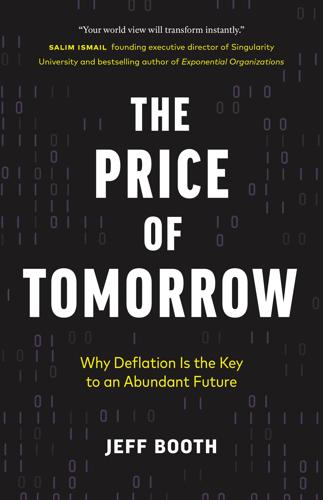
The Price of Tomorrow: Why Deflation Is the Key to an Abundant Future
by
Jeff Booth
Published 14 Jan 2020
Much work from behavioural science, machine learning, and psychology suggests that the answer is yes, our brains do act like Bayesian probability machines, constantly making new predictions based on changing information from our senses and assigning probabilities to the outcomes. What is a Bayesian probability machine? A computer that works on Bayes’s theorem, named after Thomas Bayes (1702–1761). Bayes’s theorem assesses the probability of an event based on prior information. My favourite example comes from Pedro Domingos’s book The Master Algorithm. In it, Domingos imagines a person waking up on a planet one afternoon at the beginning of time and seeing the sun go down and wondering if it will come back up.
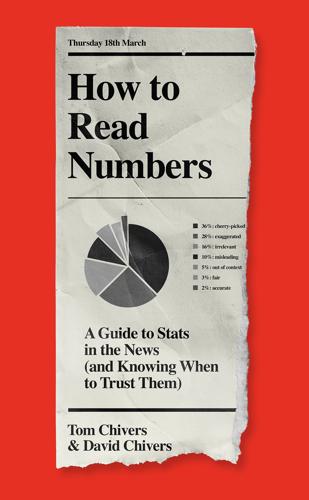
How to Read Numbers: A Guide to Statistics in the News (And Knowing When to Trust Them)
by
Tom Chivers
and
David Chivers
Published 18 Mar 2021
It’s about 95 per cent, right? Nope. If that’s all the information you have, then the answer is you have absolutely no idea. There is not enough information given to provide you with the faintest clue what your chances of being immune are. This is to do with something called Bayes’ theorem, named for the Reverend Thomas Bayes, an eighteenth-century Presbyterian clergyman and mathematical enthusiast. It’s a simple piece of reasoning, but it throws up some extremely strange results. Bayes’ theorem, when written in logical notation, looks kind of scary: P(A|B)=(P(B|A)P(A))/P(B). But it’s actually pretty straightforward.
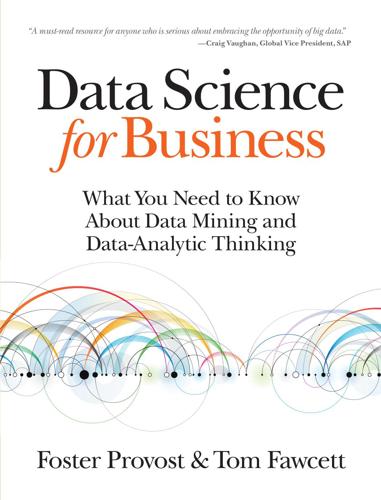
Data Science for Business: What You Need to Know About Data Mining and Data-Analytic Thinking
by
Foster Provost
and
Tom Fawcett
Published 30 Jun 2013
We could just as well have written: This means: And so: If we divide both sides by p(A) we get: Now, let’s consider B to be some hypothesis that we are interested in assessing the likelihood of, and A to be some evidence that we have observed. Renaming with H for hypothesis and E for evidence, we get: This is the famous Bayes’ Rule, named after the Reverend Thomas Bayes who derived a special case of the rule back in the 18th century. Bayes’ Rule says that we can compute the probability of our hypothesis H given some evidence E by instead looking at the probability of the evidence given the hypothesis, as well as the unconditional probabilities of the hypothesis and the evidence.
…
area under ROC curves (AUC), The Area Under the ROC Curve (AUC), Example: Performance Analytics for Churn Modeling, Example: Performance Analytics for Churn Modeling Armstrong, Louis, Example: Jazz Musicians assessing overfitting, Overfitting association discovery, Co-occurrences and Associations: Finding Items That Go Together–Associations Among Facebook Likes among Facebook Likes, Associations Among Facebook Likes–Associations Among Facebook Likes beer and lottery example, Example: Beer and Lottery Tickets–Example: Beer and Lottery Tickets eWatch/eBracelet example, Co-occurrences and Associations: Finding Items That Go Together–Co-occurrences and Associations: Finding Items That Go Together Magnum Opus system for, Associations Among Facebook Likes market basket analysis, Associations Among Facebook Likes–Associations Among Facebook Likes surprisingness, Measuring Surprise: Lift and Leverage–Measuring Surprise: Lift and Leverage AT&T, From an Expected Value Decomposition to a Data Science Solution attribute selection, Introduction to Predictive Modeling: From Correlation to Supervised Segmentation, Selecting Informative Attributes–Supervised Segmentation with Tree-Structured Models, Example: Attribute Selection with Information Gain–Example: Attribute Selection with Information Gain, The Fundamental Concepts of Data Science attributes, Models, Induction, and Prediction finding, Introduction to Predictive Modeling: From Correlation to Supervised Segmentation heterogeneous, Dimensionality and domain knowledge, Heterogeneous Attributes variable features vs., Models, Induction, and Prediction Audubon Society Field Guide to North American Mushrooms, Example: Attribute Selection with Information Gain automatic decision-making, Data Science, Engineering, and Data-Driven Decision Making average customers, profitable customers vs., Answering Business Questions with These Techniques B bag of words approach, Bag of Words bags, Bag of Words base rates, Class Probability Estimation and Logistic “Regression”, Holdout Data and Fitting Graphs, Problems with Unbalanced Classes baseline classifiers, Advantages and Disadvantages of Naive Bayes baseline methods, of data science, Summary Basie, Count, Example: Jazz Musicians Bayes rate, Bias, Variance, and Ensemble Methods Bayes, Thomas, Bayes’ Rule Bayesian methods, Bayes’ Rule, Summary Bayes’ Rule, Bayes’ Rule–A Model of Evidence “Lift” beer and lottery example, Example: Beer and Lottery Tickets–Example: Beer and Lottery Tickets Beethoven, Ludwig van, Example: Evidence Lifts from Facebook “Likes” beginning cross-validation, From Holdout Evaluation to Cross-Validation behavior description, From Business Problems to Data Mining Tasks Being John Malkovich (film), Data Reduction, Latent Information, and Movie Recommendation Bellkors Pragmatic Chaos (Netflix Challenge team), Data Reduction, Latent Information, and Movie Recommendation benefit improvement, calculating, Costs and benefits benefits and underlying profit calculation, ROC Graphs and Curves data-driven decision-making, Data Science, Engineering, and Data-Driven Decision Making estimating, Costs and benefits in budgeting, Ranking Instead of Classifying nearest-neighbor methods, Computational efficiency bi-grams, N-gram Sequences bias errors, ensemble methods and, Bias, Variance, and Ensemble Methods–Bias, Variance, and Ensemble Methods Big Data data science and, Data Processing and “Big Data”–Data Processing and “Big Data” evolution of, From Big Data 1.0 to Big Data 2.0–From Big Data 1.0 to Big Data 2.0 on Amazon and Google, Thinking Data-Analytically, Redux big data technologies, Data Processing and “Big Data” state of, From Big Data 1.0 to Big Data 2.0 utilizing, Data Processing and “Big Data” Big Red proposal example, Example Data Mining Proposal–Flaws in the Big Red Proposal Bing, Why Text Is Important, Representation Black-Sholes model, Models, Induction, and Prediction blog postings, Why Text Is Important blog posts, Example: Targeting Online Consumers With Advertisements Borders (book retailer), Achieving Competitive Advantage with Data Science breast cancer example, Example: Logistic Regression versus Tree Induction–Example: Logistic Regression versus Tree Induction Brooks, David, What Data Can’t Do: Humans in the Loop, Revisited browser cookies, Example: Targeting Online Consumers With Advertisements Brubeck, Dave, Example: Jazz Musicians Bruichladdich single malt scotch, Understanding the Results of Clustering Brynjolfsson, Erik, Data Science, Engineering, and Data-Driven Decision Making, Data Processing and “Big Data” budget, Ranking Instead of Classifying budget constraints, Profit Curves building modeling labs, From Holdout Evaluation to Cross-Validation building models, Data Mining and Its Results, Business Understanding, From Holdout Evaluation to Cross-Validation Bunnahabhain single malt whiskey, Example: Whiskey Analytics, Hierarchical Clustering business news stories example, Example: Clustering Business News Stories–The news story clusters business problems changing definition of, to fit available data, Changing the Way We Think about Solutions to Business Problems–Changing the Way We Think about Solutions to Business Problems data exploration vs., Stepping Back: Solving a Business Problem Versus Data Exploration–Stepping Back: Solving a Business Problem Versus Data Exploration engineering problems vs., Other Data Science Tasks and Techniques evaluating in a proposal, Be Ready to Evaluate Proposals for Data Science Projects expected value framework, structuring with, The Expected Value Framework: Structuring a More Complicated Business Problem–The Expected Value Framework: Structuring a More Complicated Business Problem exploratory data mining vs., The Fundamental Concepts of Data Science unique context of, What Data Can’t Do: Humans in the Loop, Revisited using expected values to provide framework for, The Expected Value Framework: Decomposing the Business Problem and Recomposing the Solution Pieces–The Expected Value Framework: Decomposing the Business Problem and Recomposing the Solution Pieces business strategy, Data Science and Business Strategy–A Firm’s Data Science Maturity accepting creative ideas, Be Ready to Accept Creative Ideas from Any Source case studies, examining, Examine Data Science Case Studies competitive advantages, Achieving Competitive Advantage with Data Science–Achieving Competitive Advantage with Data Science, Sustaining Competitive Advantage with Data Science–Superior Data Science Management data scientists, evaluating, Superior Data Scientists–Superior Data Scientists evaluating proposals, Be Ready to Evaluate Proposals for Data Science Projects–Flaws in the Big Red Proposal historical advantages and, Formidable Historical Advantage intangible collateral assets and, Unique Intangible Collateral Assets intellectual property and, Unique Intellectual Property managing data scientists effectively, Superior Data Science Management–Superior Data Science Management maturity of the data science, A Firm’s Data Science Maturity–A Firm’s Data Science Maturity thinking data-analytically for, Thinking Data-Analytically, Redux–Thinking Data-Analytically, Redux C Caesars Entertainment, Data and Data Science Capability as a Strategic Asset call center example, Profiling: Finding Typical Behavior–Profiling: Finding Typical Behavior Capability Maturity Model, A Firm’s Data Science Maturity Capital One, Data and Data Science Capability as a Strategic Asset, From an Expected Value Decomposition to a Data Science Solution Case-Based Reasoning, How Many Neighbors and How Much Influence?

In Pursuit of the Perfect Portfolio: The Stories, Voices, and Key Insights of the Pioneers Who Shaped the Way We Invest
by
Andrew W. Lo
and
Stephen R. Foerster
Published 16 Aug 2021
in which he made the distinction between the concept of market efficiency—processing information correctly—and the statement that the market portfolio of all stocks is a mean-variance efficient portfolio (we’ll return to the topic of market efficiency in chapter 4).99 Bill Sharpe’s capital asset pricing model, discussed in chapter 3, makes an important assumption that all investors can borrow or lend without constraint at the same rate of interest. Without that key assumption, Markowitz argues, there is nothing special about the market portfolio. To further describe his approach to the Perfect Portfolio, Markowitz took the perspective originally attributed to Thomas Bayes, the mathematician who created a new branch of probability theory that relied on the notion that when individuals receive new information, they update their beliefs about the probability of events they expect to take place. “Assume we are Bayesians. If we don’t have the same prior [beliefs], we shouldn’t have the same portfolios.
…
“Efficient Portfolios, Sparse Matrices, and Entities: A Retrospective.” Operations Research 50, no. 1: 154–60. ________. 2005. “Market Efficiency: A Theoretical Distinction and So What?” Financial Analysts Journal 61, no. 5: 17–30. ________. 2006. “De Finetti Scoops Markowitz.” Journal of Investment Management 4: 5–18. ________. 2010. “God, Ants and Thomas Bayes.” American Economist 55, no. 2: 5–9. ________. 2016. Risk-Return Analysis, Vol. 2, The Theory and Practice of Rational Investing. New York: McGraw-Hill. ________. 2020. Risk-Return Analysis, Vol. 3, The Theory and Practice of Rational Investing. New York: McGraw-Hill. Markowitz, Harry M., and Kenneth Blay. 2014.
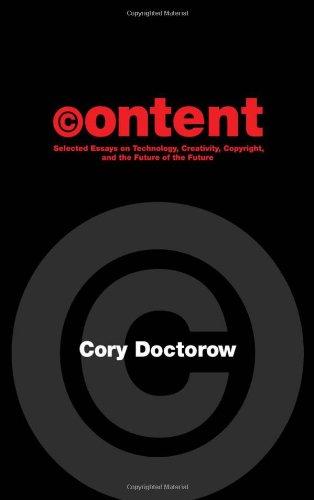
Content: Selected Essays on Technology, Creativity, Copyright, and the Future of the Future
by
Cory Doctorow
Published 15 Sep 2008
It’s a handsome old boneyard, a former plague pit (“Bone hill” — as in, there are so many bones under there that the ground is actually kind of humped up into a hill). There are plenty of luminaries buried there — John “Pilgrim’s Progress” Bunyan, William Blake, Daniel Defoe, and assorted Cromwells. But my favorite tomb is that of Thomas Bayes, the 18th-century statistician for whom Bayesian filtering is named. Bayesian filtering is plenty useful. Here’s a simple example of how you might use a Bayesian filter. First, get a giant load of non-spam emails and feed them into a Bayesian program that counts how many times each word in their vocabulary appears, producing a statistical breakdown of the word-frequency in good emails.

Demystifying Smart Cities
by
Anders Lisdorf
Use cases for cities would be in computer vision where images could be converted into counts of pedestrians, cars, and bicycles or for allowing speech interaction with city services. The resident could speak, and the input converted into text that could then be processed as questions and answers. Naïve Bayes – Based on Bayes’ theorem, the naïve Bayes algorithm aims to make probabilistic classification based on prior knowledge. Thomas Bayes was an Eighteenth-century English minister and philosopher who first proposed to use conditional probability. The basic assumption is that we can use prior knowledge to determine probabilities. If we know that smoking is an important factor in the probability of developing respiratory illnesses, it can be used to give us a probability of a given person developing a respiratory illness based on his or her smoking habits.

Advanced Stochastic Models, Risk Assessment, and Portfolio Optimization: The Ideal Risk, Uncertainty, and Performance Measures
by
Frank J. Fabozzi
Published 25 Feb 2008
The Law of Total Probability for More than Two Events The expression for the Law of Total Probability in equation (15.6) can easily be generalized to the case of K events: The only “catch” is that we need to take care that the events B1, B2, …, BK exhaust the sample space (their probabilities sum up to 1) and are mutually exclusive. (In the two-event case, B and Bc clearly fulfil these requirements.) BAYES’ RULE Bayes’ rule, named after the eighteenth-century British mathematician Thomas Bayes, provides a method for expressing an unknown conditional probability P(B|A) with the help of the known conditional probability P(A|B). Bayes’ rule, for events A and B, is given by the following expression Another formulation of Bayes’ rule is by using the Law of Total Probability in the denominator in place of P(A).
…
See also Negative autocorrelation; Positive autocorrelation detection presence, modeling Autoregressive conditional heteroskedasticity (ARCH) model generalization Autoregressive moving average (ARMA) models Autoregressive of order one Autoregressive process (AR) of order p Axiomatic system Bar chart usage Bayes, Thomas Bayes’ formula Bayes’ rule application Bell-shaped curve, real-life distribution Bell-shaped density Bell-shaped yield Benchmark, derivation Berkshire Hathway pie charts, comparison revenues, third quarter (pie chart) third quarter reports third quarter revenues bar charts pie chart Bermuda call option Bernoulli distributed random variable, mean/variance Bernoulli distribution generalization p parameter, estimation random variables, relationship Bernoulli population, sample mean (histogram) Bernoulli random variables distribution Bernoulli samples, examination Bernoulli trials, link Bessel function of the third kind defining Best linear unbiased estimator (BLUE) Beta distribution distribution function Beta factor Beta function Bias.
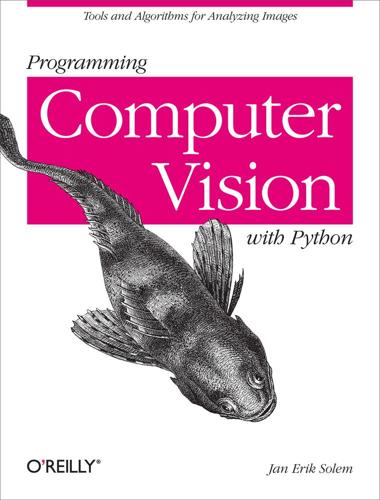
Programming Computer Vision with Python
by
Jan Erik Solem
Published 26 Jun 2012
If you want to dive deeper into classifiers and machine learning algorithms, take a look at the scikit.learn package (http://scikit-learn.org/) and try some of the algorithms on the data in this chapter. * * * [21] Another option is to only keep a selected subset of the training set. This can, however, impact accuracy. [22] Another common name is Histogram of Oriented Gradients (HOG). [23] After Thomas Bayes, an 18th-century English mathematician and minister. [24] See http://en.wikipedia.org/wiki/Sudoku for more details if you are unfamiliar with the concept. [25] Images courtesy of Martin Byröd [4], http://www.maths.lth.se/matematiklth/personal/byrod/, collected and cropped from photos of actual Sudokus.

The Logician and the Engineer: How George Boole and Claude Shannon Created the Information Age
by
Paul J. Nahin
Published 27 Oct 2012
Boole argued that this is not so, using the ideas of the previous section, and showed that P( | X) is given by a considerably more involved expression than simply “p.” What Boole did was not really original, as conditional probability had been studied a century before by the English philosopher and minister Thomas Bayes (1701–1761), whose work was published posthumously in 1764 in the Philosophical Transactions of the Royal Society of London, where it was then promptly forgotten for twenty years until the great French mathematician Pierre-Simon Laplace (1749–1827) endorsed Bayes’s results. What Boole did, then, with the following analysis, was remind his readers what the Reverend Bayes had done a hundred years before.
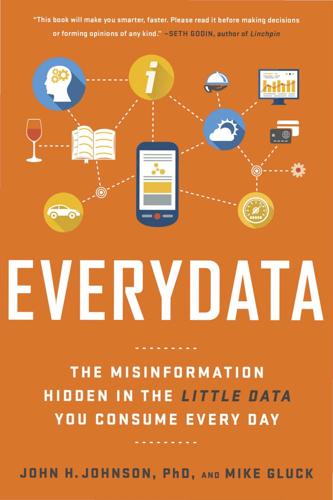
Everydata: The Misinformation Hidden in the Little Data You Consume Every Day
by
John H. Johnson
Published 27 Apr 2016
Ellen Davis, “Committing the ‘Gambler’s Fallacy’ May Be in the Cards, New Research Shows,” Texas A&M Health Science Center website, March 9, 2015, http://news.tamhsc.edu/?post=committing-the-gamblers-fallacy-may-be-in-the-cards-new-research-shows. Thanks to Ron Friedman for the find. 27. There’s another way of looking at this, known as Bayesian probability (after the eighteenth-century English mathematician Thomas Bayes). With Bayesian probability, you use the data gathered to update your initial beliefs after the fact. It’s the opposite of the way in which the gambler’s fallacy works. As one of John’s colleagues pointed out, it’s the difference between knowing that a coin is fair and learning about the coin.
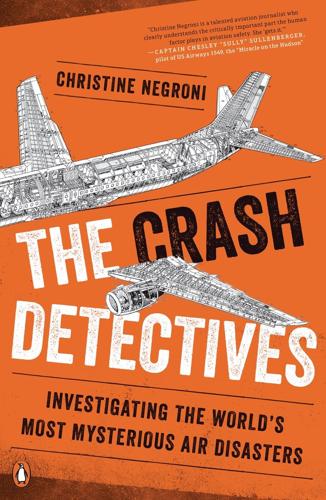
The Crash Detectives: Investigating the World's Most Mysterious Air Disasters
by
Christine Negroni
Published 26 Sep 2016
Some of the credit for finally finding the submerged airliner goes to Metron Scientific Solutions, a company staffed with pencil-wielding mathematicians who used probability, logic, and numbers to conclude that the likely resting place of the plane was a narrow slice of ocean that had already been checked. “A lack of success tells you about where it is not, and that contributes to knowledge,” said Larry Stone, chief scientist at Metron. Talk about having a positive point of view. The Metron method is based on Bayesian probability, the theory of eighteenth-century statistician and philosopher Thomas Bayes, whose first published work, Divine Benevolence, was equally optimistic because it attempted to prove that God wants us to be happy. Using Bayesian logic to look for missing airplanes, as interpreted by Metron, involves taking all kinds of input about the missing thing (even conflicting input) and assigning levels of certainty or uncertainty to each.
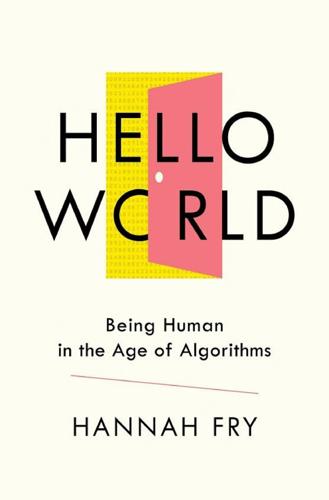
Hello World: Being Human in the Age of Algorithms
by
Hannah Fry
Published 17 Sep 2018
But where the Bayesian way of thinking really comes into its own is when you’re trying to consider more than one hypothesis simultaneously – for example, in attempting to diagnose what’s wrong with a patient on the basis of their symptoms,* or finding the position of a driverless car on the basis of sensor readings. In theory, any disease, any point on the map, could represent the underlying truth. All you need to do is weigh up the evidence to decide which is most likely to be right. And on that point, finding the location of a driverless car turns out to be rather similar to a problem that puzzled Thomas Bayes, the British Presbyterian minister and talented mathematician after whom the theorem is named. Back in the mid-1700s, he wrote an essay which included details of a game he’d devised to explain the problem. It went something a little like this:32 Imagine you’re sitting with your back to a square table.
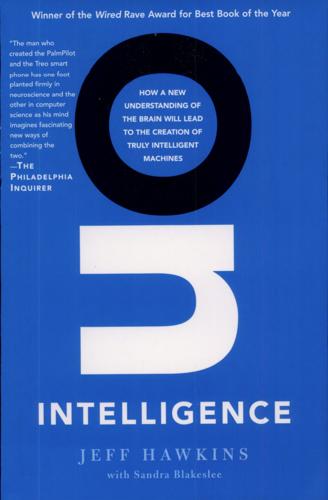
On Intelligence
by
Jeff Hawkins
and
Sandra Blakeslee
Published 1 Jan 2004
Scientists such as David Mumford at Brown University, Rajesh Rao at the University of Washington, Stephen Grossberg at Boston University, and many more have written and theorized about the role of feedback and prediction in various ways. There is an entire subfield of mathematics devoted to Bayesian networks. Named after Thomas Bayes, an English minister born in 1702 who was a pioneer in statistics, Bayesian networks use probability theory to make predictions. What has been lacking is putting these disparate bits and pieces into a coherent theoretical framework. This, I argue, has not been done before, and it is the goal of this book

Our Final Invention: Artificial Intelligence and the End of the Human Era
by
James Barrat
Published 30 Sep 2013
He was not in his office but at home, perhaps calculating the probability of God’s existence. According to Dr. Holtzman, sometime before he died, Good updated that probability from zero to point one. He did this because as a statistician, he was a long-term Bayesian. Named for the eighteenth-century mathematician and minister Thomas Bayes, Bayesian statistics’ main idea is that in calculating the probability of some statement, you can start with a personal belief. Then you update that belief as new evidence comes in that supports your statement or doesn’t. If Good’s original disbelief in God had remained 100 percent, no amount of data, not even God’s appearance, could change his mind.
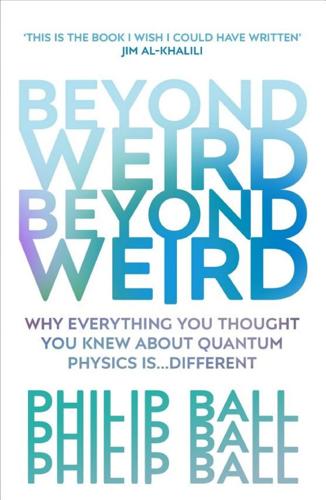
Beyond Weird
by
Philip Ball
Published 22 Mar 2018
Those beliefs do not become realized as facts until they impinge on the consciousness of the observer – and so the facts are specific to every observer (although different observers can find themselves agreeing on the same facts). This notion takes its cue from standard Bayesian probability theory, introduced in the eighteenth century by the English mathematician and clergyman Thomas Bayes. In Bayesian statistics, probabilities are not defined with reference to some objective state of affairs in the world, but instead quantify personal degrees of belief of what might happen – which we update as we acquire new information. The QBist view, however, says something much more profound than simply that different people know different things.
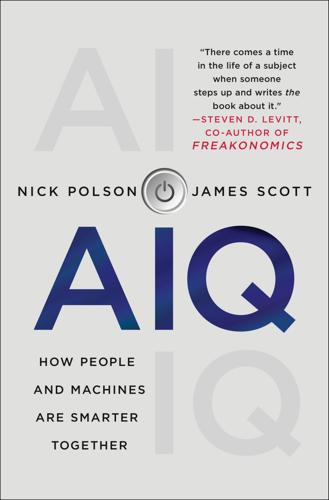
AIQ: How People and Machines Are Smarter Together
by
Nick Polson
and
James Scott
Published 14 May 2018
Bayes’s Rule, from Reverend to Robot Here’s the key mantra we must take away from the story of the Scorpion: all probabilities are really conditional probabilities. In other words, all probabilities are contingent upon what we know. When our knowledge changes, our probabilities must change, too—and Bayes’s rule tells us how to change them. Bayes’s rule was discovered by an obscure English clergyman named Thomas Bayes. Born in 1701 to a Presbyterian family in London, Bayes showed an early talent for mathematics, but he came of age at a time when religious dissenters were barred from universities in England. Denied the chance to study math at Oxford or Cambridge, he ended up studying theology at the University of Edinburgh instead.

Know Thyself
by
Stephen M Fleming
Published 27 Apr 2021
Jonathan Steele, “Stanislav Petrov Obituary,” The Guardian, October 11, 2017, www.theguardian.com/world/2017/oct/11/stanislav-petrov-obituary. 2. Green and Swets (1966). 3. The seeds of Bayes’s rule were first identified by the eleventh-century Arabic mathematician Ibn al-Haytham, developed by English clergyman and mathematician Thomas Bayes in 1763, and applied to a range of scientific problems by the eighteenth-century French mathematician Pierre-Simon Laplace. See McGrayne (2012). 4. Felleman and Van Essen (1991); Zeki and Bartels (1998). 5. Clark (2013); Clark (2016); Craik (1963); Friston (2010); Helmholtz (1856); Gregory (1970); Hohwy (2013). 6.
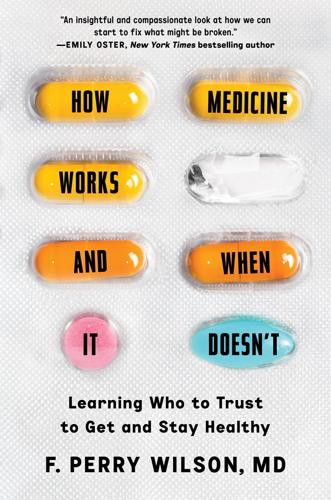
How Medicine Works and When It Doesn't: Learning Who to Trust to Get and Stay Healthy
by
F. Perry Wilson
Published 24 Jan 2023
Each time that link was demonstrated, my belief in my wife’s hypothesis strengthened, and my belief in my own hypothesis weakened. Eventually, the weight of evidence was too much to bear, and I conceded she was probably right. These kids are crazy, but they are extra-crazy with chocolate in their systems. Allowing the slow, methodical updating of your prior beliefs based on new data is a form of Bayesian reasoning. Thomas Bayes was an eighteenth-century English minister and statistician whose eponymous theorem demonstrated, mathematically, how new information can be used to update prior knowledge. It is a centerpiece of statistics to this day, and the bane of many undergraduate stats majors. But Bayesian reasoning is quite similar to how the human mind works, at least when we are not unreasonably tethered to conclusions we want or need to be true.

The Singularity Is Near: When Humans Transcend Biology
by
Ray Kurzweil
Published 14 Jul 2005
He plans to develop a system incorporating all human ideas.167 One application would be to inform policy makers of which ideas are held by which community. Bayesian Nets. Over the last decade a technique called Bayesian logic has created a robust mathematical foundation for combining thousands or even millions of such probabilistic rules in what are called "belief networks" or Bayesian nets. Originally devised by English mathematician Thomas Bayes and published posthumously in 1763, the approach is intended to determine the likelihood of future events based on similar occurrences in the past.168 Many expert systems based on Bayesian techniques gather data from experience in an ongoing fashion, thereby continually learning and improving their decision making.
…
Kristen Philipkoski, "Now Here's a Really Big Idea," Wired News, November 25, 2002, http://www.wired.com/news/technology/0,1282,56374,00.html, reporting on Darryl Macer, "The Next Challenge Is to Map the Human Mind," Nature 420 (November 14, 2002): 121; see also a description of the project at http://www.biol.tsukuba.ac.jp/~macer/index.html. 168. Thomas Bayes, "An Essay Towards Solving a Problem in the Doctrine of Chances," published in 1763, two years after his death in 1761. 169. SpamBayes spam filter, http://spambayes.sourceforge.net. 170. Lawrence R. Rabiner, "A Tutorial on Hidden Markov Models and Selected Applications in Speech Recognition," Proceedings of the IEEE 77 (1989): 257–86.

On the Edge: The Art of Risking Everything
by
Nate Silver
Published 12 Aug 2024
The Times story was clearly trying to frame this as a negative (like by putting “effective altruism” and “Bayesian reasoning”—a foundational concept in statistics—in scare quotes).[*8] But this actually isn’t such a bad definition of rationalism. And if that’s the standard we’re going by, I probably qualify as a rationalist myself, whether I want to admit it or not. (Named after the Reverend Thomas Bayes, Bayesian reasoning—the act of viewing the world probabilistically and regularly updating your views as you encounter new evidence—is sort of the lodestar of my first book, The Signal and the Noise.) In fact, even if I had never applied to join Team Rationalist, Alexander—whose soft features, dry wit, and male pattern baldness reminded me uncannily of my dad’s (West Coast Jewish) side of the family—had already drafted me into it.
…
Bayesian: A thought process reflecting Bayes’ theorem, indicating that you (1) have some initial beliefs or priors about the world rather than treating it as a blank slate; and (2) rationally update those beliefs based on the strength of new evidence. Bayes’ theorem: A foundational concept in probability theory, attributed to Reverend Thomas Bayes, used to update the likelihood of an event based on new evidence. It’s expressed as P(A|B) = P(B|A) * P(A) / P(B), where P(A|B) is the probability of A given B, and P(B|A) is the probability of B given A. The theorem emphasizes the importance of reviving your initial beliefs (priors) in light of new information to arrive at more accurate conclusions (posteriors).
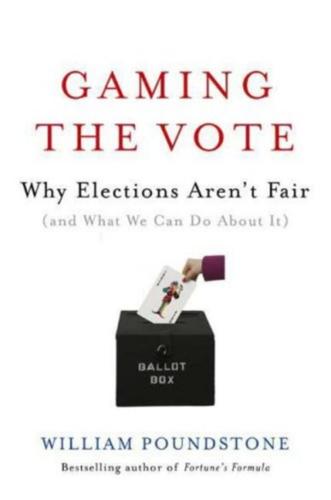
Gaming the Vote: Why Elections Aren't Fair (And What We Can Do About It)
by
William Poundstone
Published 5 Feb 2008
Smith holds or has applied for patents covering such exotica as a computer made out of DNA, theft-proof credit cards, a 3-D vision process, and a magnetic catapult that could be used for launching satellites, In December 2000, with the Supreme Court deciding a bitterly contested presidency, Smith completed an article purporting to demonstrate the superiority of a system that no one had taken seriously, range voting. He began with an idea for comparing the merits of different voting systems, using a measure called Bayesian regret. The "Bayes" part refers to eighteenth-century English mathematician Thomas Bayes, a pioneer of probability theory, "Bayesian regret" is a statistical term that Smith defines as "expected avoidable human unhappiness." In other words, Smith tried to gauge how voting systems fail the voters by electing candidates other than the one who would have resulted in the greatest overall satisfaction, To do this, he ran a large series of computer simulations of elections.
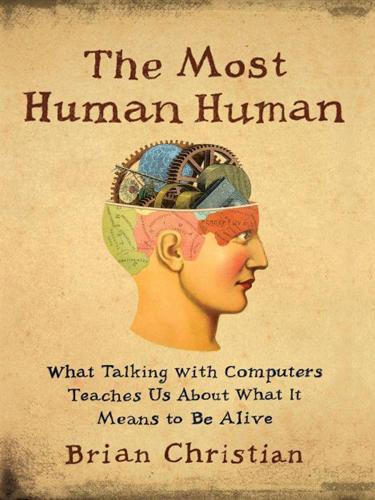
The Most Human Human: What Talking With Computers Teaches Us About What It Means to Be Alive
by
Brian Christian
Published 1 Mar 2011
I walk out of the Brighton Centre, to the bracing sea air for a minute, and into a small, locally owned shoe store looking for a gift to bring back home to my girlfriend; the shopkeeper notices my accent; I tell her I’m from Seattle; she is a grunge fan; I comment on the music playing in the store; she says it’s Florence + the Machine; I tell her I like it and that she would probably like Feist … I walk into a tea and scone store called the Mock Turtle and order the British equivalent of coffee and a donut, except it comes with thirteen pieces of silverware and nine pieces of flatware; I am so in England, I think; an old man, probably in his eighties, is shakily eating a pastry the likes of which I’ve never seen; I ask him what it is; “coffee meringue,” he says and remarks on my accent; an hour later he is telling me about World War II, the exponentially increasing racial diversity of Britain, that House of Cards is a pretty accurate depiction of British politics, minus the murders, but that really I should watch Spooks; do you get Spooks on cable, he is asking me … I meet my old boss for dinner; and after a couple years of being his research assistant and occasionally co-author, and after a brief thought of becoming one of his Ph.D. students, after a year of our paths not really crossing, we negotiate whether our formerly collegial and hierarchical relationship, now that its context is removed, simply dries up or flourishes into a domain-general friendship; we are ordering appetizers and saying something about Wikipedia, something about Thomas Bayes, something about vegetarian dining … Laurels are of no use. If you de-anonymized yourself in the past, great. But that was that. And now, you begin again. 1. These logs would, three years later, be put on the IBM website, albeit in incomplete form and with so little fanfare that Kasparov himself wouldn’t find out about them until 2005.

Superforecasting: The Art and Science of Prediction
by
Philip Tetlock
and
Dan Gardner
Published 14 Sep 2015
If he says, “It’s to the left,” the likelihood of the first ball being on the right side of the table increases a little more. Keep repeating the process and you slowly narrow the range of the possible locations, zeroing in on the truth—although you will never eliminate uncertainty entirely.16 If you’ve taken Statistics 101, you may recall a version of this thought experiment was dreamt up by Thomas Bayes. A Presbyterian minister, educated in logic, Bayes was born in 1701, so he lived at the dawn of modern probability theory, a subject to which he contributed with “An Essay Towards Solving a Problem in the Doctrine of Chances.” That essay, in combination with the work of Bayes’ friend Richard Price, who published Bayes’ essay posthumously in 1761, and the insights of the great French mathematician Pierre-Simon Laplace, ultimately produced Bayes’ theorem.
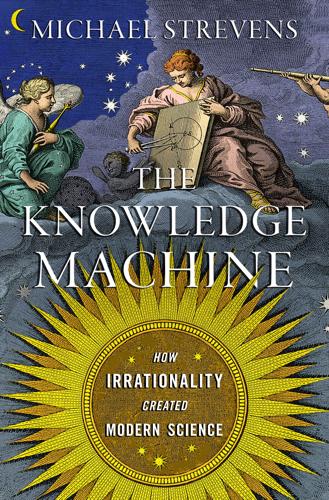
The Knowledge Machine: How Irrationality Created Modern Science
by
Michael Strevens
Published 12 Oct 2020
Philosophers call it (I’m sorry to say) “confirmation holism.” 83 The heart of scientific logic is a human heart: To more precisely formulate these ideas, philosophers have constructed probabilistic logics to capture scientists’ plausibility rankings and their role in evaluating evidence. Such logical systems differ in various ways, but they all implement to some extent a simple idea: if your chain breaks, suspect the weakest link. The most influential probabilistic system was first developed by the eighteenth-century clergyman and mathematician Thomas Bayes (1701–1761). Bayes’s approach cannot be wholly correct—it assumes that scientists know all possible theories in advance—but it provides an excellent model of many aspects of scientific inquiry. In the Bayesian framework, scientists’ plausibility rankings for the things that matter—hypotheses and auxiliary assumptions—are represented by numbers between 0 and 1, varying from person to person.
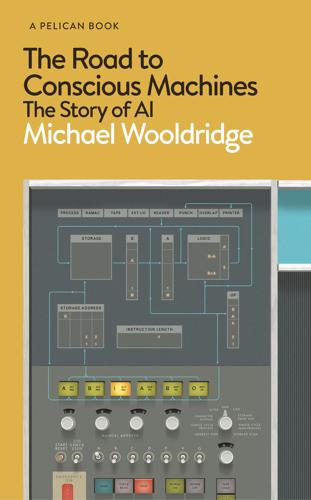
The Road to Conscious Machines
by
Michael Wooldridge
Published 2 Nov 2018
Many ad hoc schemes for dealing with uncertainty were invented and re-invented throughout the history of AI, but by the 1990s, one approach had come to dominate. The approach is called Bayesian inference. Bayesian inference was invented by an eighteenth-century British mathematician, the Reverend Thomas Bayes. He formulated a version of a technique that we now call Bayes’ Theorem in his honour. It is concerned with how we should rationally adjust our beliefs in the presence of new information. In the case of our driverless car example, the beliefs relate to whether there is an obstacle in front of us; the new information is the sensor data.

Mapmatics: How We Navigate the World Through Numbers
by
Paulina Rowinska
Published 5 Jun 2024
Very difficult, it turns out, when we consider the vastness of the Atlantic Ocean – so maps and maths were needed again. The most useful theorem If I had to choose what, for me, is the most useful piece of maths, it would be Bayes’ theorem. Formulated in eighteenth-century England by the Presbyterian minister Thomas Bayes, it tells us how to update our beliefs as we gather new information, which makes it particularly useful when searching for lost objects – as big as plane wreckages in the ocean and as small as misplaced headphones in my one-bedroom flat. To find my headphones, I could frantically turn my flat upside-down; alternatively, I could apply a methodical, Bayesian search.
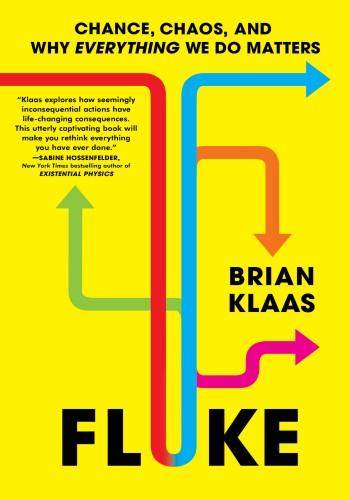
Fluke: Chance, Chaos, and Why Everything We Do Matters
by
Brian Klaas
Published 23 Jan 2024
Before Pascal and Fermat, how to split the pot based on who was mathematically most likely to win was not clear-cut. In solving that conundrum, they unleashed rapid advancements in the nascent field of probability, bolstered by titans such as Gerolamo Cardano, the Chevalier de Méré, Jacob Bernoulli, Pierre-Simon Laplace (of Laplace’s demon), and Thomas Bayes (who developed what we now call Bayesian inference or Bayesian statistics). As the mathematical tools grew, a greater proportion of the world could be understood and calculated. Soon, a craze swept the intellectuals of European high society: to count everything. As Isaac Newton developed his mathematical physics, in which the world is shown to follow quantifiable patterns, thinkers were tempted by the prospect of solving the mysteries of human society using numbers and equations.

Fixed: Why Personal Finance is Broken and How to Make it Work for Everyone
by
John Y. Campbell
and
Tarun Ramadorai
Published 25 Jul 2025
See Pedro Bordalo, Nicola Gennaioli, and Andrei Shleifer, “Salience theory of choice under risk,” Quarterly Journal of Economics 127 (2012): 1243–1285. 15. Sarah Lichtenstein, Paul Slovic, Baruch Fischhoff, Mark Layman, and Barbara Combs, “Judged frequency of lethal events,” Journal of Experimental Psychology: Human Learning and Memory 4, no. 6 (1978): 551–578. 16. This reasoning is an application of Bayes’ Theorem, first stated by Thomas Bayes, an eighteenth century English mathematician and Presbyterian minister. Bayesian reasoning is at the heart of rational thinking in the face of uncertainty. 17. This is another of the seminal contributions of Daniel Kahneman and Amos Tversky. See Kahneman and Tversky, “On the psychology of prediction,” Psychological Review 80, no. 4 (1973): 237–251. 18.

Programming Collective Intelligence
by
Toby Segaran
Published 17 Dec 2008
In docclass.py, create a subclass of classifier called naivebayes, and create a docprob method that extracts the features (words) and multiplies all their probabilities together to get an overall probability: class naivebayes(classifier): def docprob(self,item,cat): features=self.getfeatures(item) # Multiply the probabilities of all the features together p=1 for f in features: p*=self.weightedprob(f,cat,self.fprob) return p You now know how to calculate Pr(Document | Category), but this isn't very useful by itself. In order to classify documents, you really need Pr(Category | Document). In other words, given a specific document, what's the probability that it fits into this category? Fortunately, a British mathematician named Thomas Bayes figured out how to do this about 250 years ago. A Quick Introduction to Bayes' Theorem Bayes' Theorem is a way of flipping around conditional probabilities. It's usually written as: Pr(A | B) = Pr(B | A) × Pr(A)/Pr(B) In the example, this becomes: Pr(Category | Document) = Pr(Document | Category) × Pr(Category) / Pr(Document) The previous section showed how to calculate Pr(Document | Category), but what about the other two values in the equation?

The Road to Ruin: The Global Elites' Secret Plan for the Next Financial Crisis
by
James Rickards
Published 15 Nov 2016
Investors who use complexity theory can leave mainstream analysis behind and get better forecasting results. The third tool in addition to behavioral psychology and complexity theory is Bayesian statistics, a branch of etiology also referred to as causal inference. Both terms derive from Bayes’ theorem, an equation first described by Thomas Bayes and published posthumously in 1763. A version of the theorem was elaborated independently and more formally by the French mathematician Pierre-Simon Laplace in 1774. Laplace continued work on the theorem in subsequent decades. Twentieth-century statisticians have developed more rigorous forms.
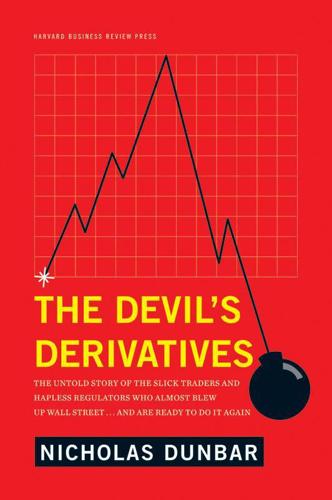
The Devil's Derivatives: The Untold Story of the Slick Traders and Hapless Regulators Who Almost Blew Up Wall Street . . . And Are Ready to Do It Again
by
Nicholas Dunbar
Published 11 Jul 2011
One might argue that since the market values the loans at $800 million, the bank ought to write down the value of the equity investment to zero. However, accounting rules for loan books don’t require such recognitions to take place. 7. After de Moivre’s death, the refinement of mortality calculations was continued in London by Richard Price, friend of Thomas Bayes and Benjamin Franklin, and founding actuary of the Equitable Life Assurance Society. 8. Arturo Cifuentes and Gerard O’Connor, “The Binomial Expansion Method Applied to CBO/CLO Analysis,” Moody’s Investors Service special report, December 13, 1996. 9. Ibid. 10. For a detailed account of the invention of BISTRO, see Gillian Tett, Fool’s Gold: How the Bold Dream of a Small Tribe at J.P.
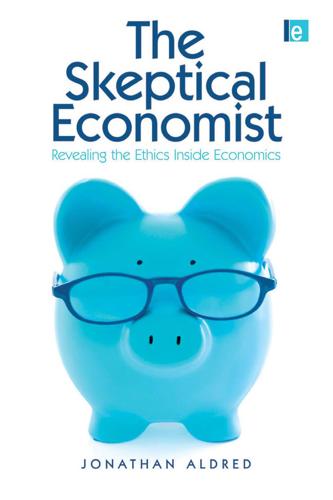
The Skeptical Economist: Revealing the Ethics Inside Economics
by
Jonathan Aldred
Published 1 Jan 2009
This is a very broad question, so we shall focus on just one aspect of it, namely the practice of quantifying uncertainty and ignorance — inventing probabilities when there is no basis to do so. The practice is widespread among economists because many of them believe that, no matter how extreme the uncertainty, effective probabilities always exist. This view is termed ‘subjective Bayesianism’ (hereafter Bayesianism for short), from the Reverend Thomas Bayes, an 18th-century English mathematician.35 Its implications are startling. Bayesians believe there is no such thing as pure uncertainty in the sense I have defined it. They assert that we always use probabilities, consciously or otherwise, when outcomes are not certain. The issues are more clearly depicted in simple gambling games than messy real-world choices; the Ellsberg Paradox (see box opposite) is a classic illustration.

The Deep Learning Revolution (The MIT Press)
by
Terrence J. Sejnowski
Published 27 Sep 2018
Tomaso Poggio had developed a hierarchical network called “HMAX” that could classify a limited number of objects.2 This suggested that performance would improve with deeper networks. In the first years of the new century, graphical models were developed that made contact with a rich vein of probabilistic models called “Bayes networks,” based on a theorem formulated by the eighteenth-century British mathematician Thomas Bayes that allows new evidence to update prior beliefs. Judea Pearl at the University of California, Los Angeles, had earlier introduced “belief networks”3 to artificial intelligence based on Bayesian analysis, which were strengthened and extended by developing methods for learning the probabilities in the networks from data.
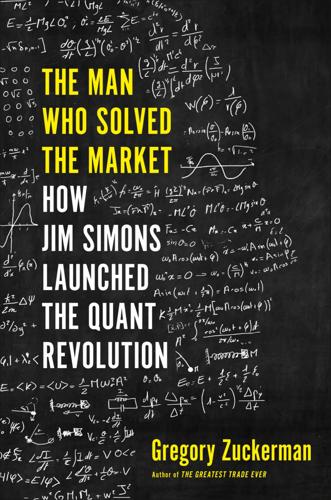
The Man Who Solved the Market: How Jim Simons Launched the Quant Revolution
by
Gregory Zuckerman
Published 5 Nov 2019
To do that, the IBM researchers employed the Baum-Welch algorithm—codeveloped by Jim Simons’s early trading partner Lenny Baum—to zero in on the various language probabilities. Rather than manually programming in static knowledge about how language worked, they created a program that learned from data. Brown, Mercer, and the others relied upon Bayesian mathematics, which had emerged from the statistical rule proposed by Reverend Thomas Bayes in the eighteenth-century. Bayesians will attach a degree of probability to every guess and update their best estimates as they receive new information. The genius of Bayesian statistics is that it continuously narrows a range of possibilities. Think, for example, of a spam filter, which doesn’t know with certainty if an email is malicious, but can be effective by assigning odds to each one received by constantly learning from emails previously classified as “junk.”

The Undoing Project: A Friendship That Changed Our Minds
by
Michael Lewis
Published 6 Dec 2016
After extracting each chip, he’d give the psychologists his best guess of the odds that the bag he was holding was filled with mostly red, or mostly white, chips. The beauty of the experiment was that there was a correct answer to the question: What is the probability that I am holding the bag of mostly red chips? It was provided by a statistical formula called Bayes’s theorem (after Thomas Bayes, who, strangely, left the formula for others to discover in his papers after his death, in 1761). Bayes’s rule allowed you to calculate the true odds, after each new chip was pulled from it, that the book bag in question was the one with majority white, or majority red, chips. Before any chips had been withdrawn, those odds were 50:50—the bag in your hands was equally likely to be either majority red or majority white.
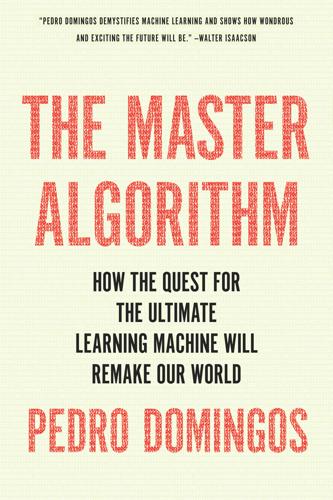
The Master Algorithm: How the Quest for the Ultimate Learning Machine Will Remake Our World
by
Pedro Domingos
Published 21 Sep 2015
For Bayesians, learning is “just” another application of Bayes’ theorem, with whole models as the hypotheses and the data as the evidence: as you see more data, some models become more likely and some less, until ideally one model stands out as the clear winner. Bayesians have invented fiendishly clever kinds of models. So let’s get started. Thomas Bayes was an eighteenth-century English clergyman who, without realizing it, became the center of a new religion. You may well ask how that could happen, until you notice that it happened to Jesus, too: Christianity as we know it was invented by Saint Paul, while Jesus saw himself as the pinnacle of the Jewish faith.
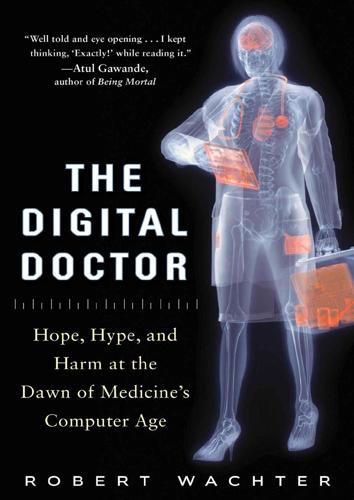
The Digital Doctor: Hope, Hype, and Harm at the Dawn of Medicine’s Computer Age
by
Robert Wachter
Published 7 Apr 2015
This is the part of diagnostic reasoning that beginners find most vexing, since they lack the foundational knowledge to understand why their teacher focused so intently on one nugget of information and all but ignored others that, to the novice, seemed equally crucial. How do the great diagnosticians make such choices? We now recognize this as a relatively intuitive version of Bayes’ theorem. Developed by the eighteenth-century British theologian-turned-mathematician Thomas Bayes, this theorem (often ignored by students because it is taught to them with the dryness of a Passover matzo) is the linchpin of clinical reasoning. In essence, Bayes’ theorem says that any medical test must be interpreted from two perspectives. The first: How accurate is the test—that is, how often does it give right or wrong answers?

Human Frontiers: The Future of Big Ideas in an Age of Small Thinking
by
Michael Bhaskar
Published 2 Nov 2021
What he'd built was a miniature factory for ideas: in Edison's words it was for ‘rapid and cheap development of an invention’, nothing less than ‘a minor invention every ten days and a big thing every six months or so’. It was precisely the system, the network, the organisation, that had become significant. In the early nineteenth century a painter like Samuel Morse could still invent the telegraph. Lone scribblers and tinkerers were common – English reverends like Thomas Bayes, gentleman thinkers like Darwin, renegades and loners from Nietzsche to Marconi. But while inventions like the telephone, radio and the motor car were still associated with individuals (even if in reality many individuals were about to realise them), each had quickly led to the growth of behemoths like Bell Corporation, RCA or General Motors.

Market Risk Analysis, Quantitative Methods in Finance
by
Carol Alexander
Published 2 Jan 2007
Thus, because we observe that there is 1 chance in 6 of getting a five when a fair die is thrown, we say that the probability of this event is 1/6. But long before the relative frequentist theory came to dominate our approach to probability and statistics, a more general Bayesian approach to probability and statistics had been pioneered by Thomas Bayes (1702–1761). The classical approach is based on objective information culled from experimental observations, but Bayes allowed subjective assessments of probabilities to be made, calling these assessments the prior beliefs. In fact, the classical approach is just a simple case of Bayesian probability and statistics, where there is no subjective information and so the prior distribution is uniform.

The Ascent of Money: A Financial History of the World
by
Niall Ferguson
Published 13 Nov 2007
In 1738 the Swiss mathematician Daniel Bernoulli proposed that ‘The value of an item must not be based on its price, but rather on the utility that it yields’, and that the ‘utility resulting from any small increase in wealth will be inversely proportionate to the quantity of goods previously possessed’ - in other words $100 is worth more to someone on the median income than to a hedge fund manager. 6. Inference. In his ‘Essay Towards Solving a Problem in the Doctrine of Chances’ (published posthumously in 1764), Thomas Bayes set himself the following problem: ‘Given the number of times in which an unknown event has happened and failed; Required the chance that the probability of its happening in a single trial lies somewhere between any two degrees of probability that can be named.’ His resolution of the problem - ‘The probability of any event is the ratio between the value at which an expectation depending on the happening of the event ought to be computed, and the chance of the thing expected upon it’s [sic] happening’ - anticipates the modern formulation that expected utility is the probability of an event times the payoff received in case of that event.18 In short, it was not merchants but mathematicians who were the true progenitors of modern insurance.

Little Brother
by
Cory Doctorow
Published 29 Apr 2008
No one could tell which of the Internet's packets were Xnet and which ones were just plain old banking and e-commerce and other encrypted communication. You couldn't find out who was tying the Xnet, let alone who was using the Xnet. But what about Dad's "Bayesian statistics?" I'd played with Bayesian math before. Darryl and I once tried to write our own better spam filter and when you filter spam, you need Bayesian math. Thomas Bayes was an 18th century British mathematician that no one cared about until a couple hundred years after he died, when computer scientists realized that his technique for statistically analyzing mountains of data would be super-useful for the modern world's info-Himalayas. Here's some of how Bayesian stats work.
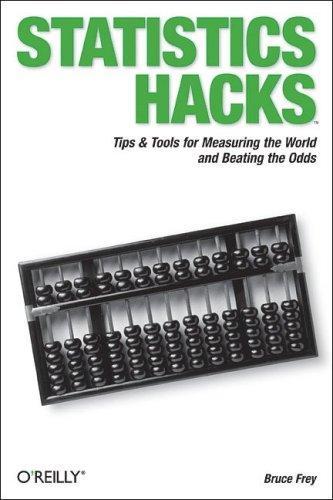
Statistics hacks
by
Bruce Frey
Published 9 May 2006
Of the 9,102 women who will score negative on the screening, 12 actually have cancer. This is a relatively small 1/10 of 1 percent, but the testing will miss those people altogether, and they will not receive treatment. Why It Works Medical screening accuracy uses a specific application of a generalized approach to conditional probability attributed to Thomas Bayes, a philosopher and mathematician in the 1700s. "If this, then what are the chances that..." is a conditional probability question. Bayes's approach to conditional probabilities was to look at the naturally occurring frequencies of events. The basic formula for estimating the chance that one has a disease if one has a positive test result is: Expressed as conditional probabilities, the formula is: To answer the all-important question in our breast cancer example ("If a woman scores a positive test result, how likely is she to have breast cancer?")
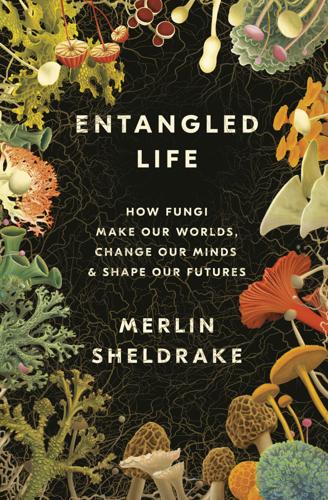
Entangled Life: How Fungi Make Our Worlds, Change Our Minds & Shape Our Futures
by
Merlin Sheldrake
Published 11 May 2020
sophistications of fungal lives: For estimates of the number of fungal species see Hawksworth (2001) and Hawksworth and Lücking (2017). when we actually look: Among neuroscientists, the involvement of our expectations in perception is known as top-down influence, or sometimes as Bayesian inference (after Thomas Bayes, a mathematician who made a founding contribution to the mathematics of probability, or “the doctrine of chances”). See Gilbert and Sigman (2007), and Mazzucato et al. (2019). “they’re cleverer than me”: Adamatzky (2016), Latty and Beekman (2011), Nakagaki et al. (2000), Bonifaci et al. (2012), Tero et al. (2010), and Oettmeier et al. (2017).

Rationality: What It Is, Why It Seems Scarce, Why It Matters
by
Steven Pinker
Published 14 Oct 2021
In chapters 6 and 7 we’ll explore how best to make consequential decisions when we know the probabilities, but the starting point must be the probabilities themselves: given the evidence, how likely is it that some state of affairs is true? For all the scariness of the word “theorem,” Bayes’s rule is rather simple, and as we will see at the end of the chapter, it can be made gut-level intuitive. The great insight of the Reverend Thomas Bayes (1701–1761) was that the degree of belief in a hypothesis may be quantified as a probability. (This is the subjectivist meaning of “probability” that we met in the last chapter.) Call it prob(Hypothesis), the probability of a hypothesis, that is, our degree of credence that it is true. (In the case of medical diagnosis, the hypothesis is that the patient has the disease.)
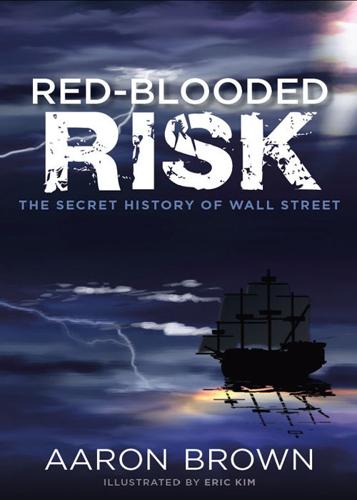
Red-Blooded Risk: The Secret History of Wall Street
by
Aaron Brown
and
Eric Kim
Published 10 Oct 2011
Second, we know nothing about the accuracy of this statement in particular; we only make a claim about the long-term accuracy of lots of statements. This is how we turn an event that has already happened—drawing nine red marbles out of 10—into a hypothetical coin-flip gambling game that can be repeated indefinitely. The main alternative to frequentist statistics today is the Bayesian view. It is named for Thomas Bayes, an eighteenth-century theorist, but it was Pierre-Simon Laplace who put forth the basic ideas. It was not until the twentieth century, however, that researchers, including Richard Cox and Bruno de Finetti, created the modern formulation. In the Bayesian view of the urn, you must have some prior belief about the number of red marbles in the urn.
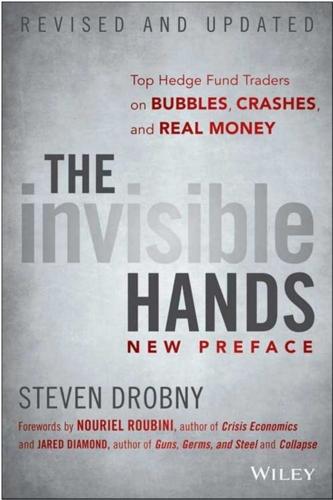
The Invisible Hands: Top Hedge Fund Traders on Bubbles, Crashes, and Real Money
by
Steven Drobny
Published 18 Mar 2010
We then input that adjusted expected return into the Titanic funnel, which assesses how much it will lose in a variety of cataclysms, giving me the recommended position. It is important to note that I am not putting trades on just to achieve the Titanic loss number. I am just looking for mispricings. Bayesian Methods The term Bayesian refers to the work Thomas Bayes, who proved a specific case of the now eponymous theorem, published after his death in 1761. The Bayesian interpretation of probability can be seen as a form of logic that allows for analysis of uncertain statements. To evaluate the probability of a hypothesis, Bayes’ theorem compares probabilities before and after the existence of new data.

Pirate Cinema
by
Cory Doctorow
Published 2 Oct 2012
He gestured at the rolling lawns to one side of the ancient, mossy, fenced-in headstones. "Nonconformist cemetery," he went on, leading me deeper. "Unconsecrated ground. Lots of interesting folks buried here. You got your writers: like John Bunyon who wrote Pilgrims Progress. You got your philosophers, like Thomas Hardy. And some real maths geniuses, like old Thomas Bayes --" He pointed to a low, mossy tomb. "He invented a branch of statistics that got built into every spam filter, a couple hundred years after they buried him." He sat down on a bench. It was after mid-day now, and only a few people were eating lunch around us, none close enough to overhear us.

Science Fictions: How Fraud, Bias, Negligence, and Hype Undermine the Search for Truth
by
Stuart Ritchie
Published 20 Jul 2020
Doing away with p-values wouldn’t necessarily improve matters; in fact, by introducing another source of subjectivity, it might make the situation a lot worse.26 With tongue only partly in cheek, John Ioannidis has noted that if we remove all such objective measures we invite a situation where ‘all science will become like nutritional epidemiology’ – a scary prospect indeed.27 The same criticism is often levelled at the other main alternative to p-values: Bayesian statistics. Drawing on a probability theorem devised by the eighteenth-century statistician Thomas Bayes, this method allows researchers to take the strength of previous evidence – referred to as a ‘prior’ – into account when assessing the significance of new findings. For instance, if someone tells you their weather forecast predicts a rainy day in London in the autumn, it won’t take too much to convince you that they’re right.
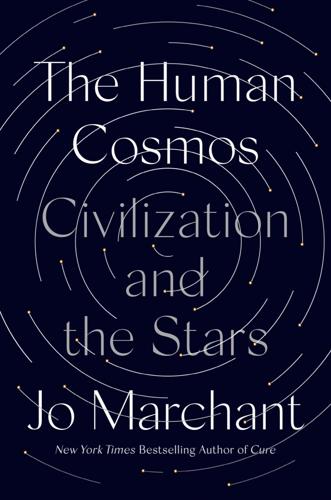
The Human Cosmos: A Secret History of the Stars
by
Jo Marchant
Published 15 Jan 2020
He argues that treating information as a new kind of substance that exists in the external world, independent of our knowledge of it, was missing Wheeler’s point: “If a quantum state just was information, how could it be unknown? Surely it had to be known by someone or something?” Instead, Fuchs took inspiration from the Bayesian approach to probability (named for the eighteenth-century British mathematician Thomas Bayes). This argues that there are no objective probabilities out there to be discovered; when we determine the probability that a certain event will happen, it is always a function of our subjective knowledge and beliefs. Fuchs and his colleagues developed an analogous interpretation of quantum mechanics, which says that the probabilities calculated by quantum physicists relate not to what’s happening out in the world, but the internal knowledge of the observer.
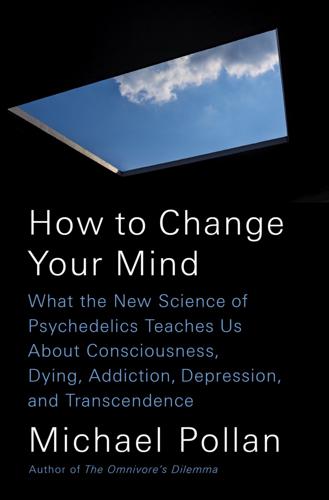
How to Change Your Mind: What the New Science of Psychedelics Teaches Us About Consciousness, Dying, Addiction, Depression, and Transcendence
by
Michael Pollan
Published 30 Apr 2018
So rather than starting from scratch to build a new perception from every batch of raw data delivered by the senses, the mind jumps to the most sensible conclusion based on past experience combined with a tiny sample of that data. Our brains are prediction machines optimized by experience, and when it comes to faces, they have boatloads of experience: faces are always convex, so this hollow mask must be a prediction error to be corrected. These so-called Bayesian inferences (named for Thomas Bayes, the eighteenth-century English philosopher who developed the mathematics of probability, on which these mental predictions are based) serve us well most of the time, speeding perception while saving effort and energy, but they can also trap us in literally preconceived images of reality that are simply false, as in the case of the rotating mask.
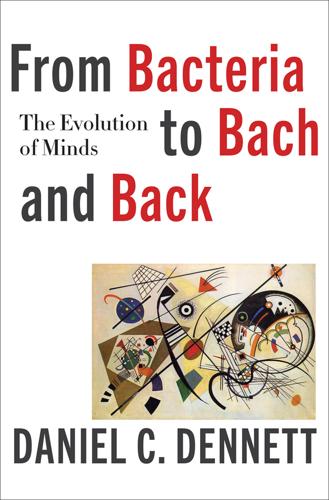
From Bacteria to Bach and Back: The Evolution of Minds
by
Daniel C. Dennett
Published 7 Feb 2017
With that caution in hand, we can address the idea that is now sweeping through cognitive science as a very promising answer to how the brain picks up, and uses, the available semantic information: Bayesian hierarchical predictive coding. (For excellent accounts see Hinton 2007; Clark 2013; and the commentary on Clark, Hohwy 2013.) The basic idea is delicious. The Reverend Thomas Bayes (1701–1761) developed a method of calculating probabilities based on one’s prior expectations. Each problem is couched thus: Given that your expectations based on past experience (including, we may add, the experience of your ancestors as passed down to you) are such and such (expressed as probabilities for each alternative), what effect on your future expectations should the following new data have?

Artificial Intelligence: A Modern Approach
by
Stuart Russell
and
Peter Norvig
Published 14 Jul 2019
In 1654, Blaise Pascal (1623–1662), in a letter to Pierre Fermat (1601–1665), showed how to predict the future of an unfinished gambling game and assign average payoffs to the gamblers. Probability quickly became an invaluable part of the quantitative sciences, helping to deal with uncertain measurements and incomplete theories. Jacob Bernoulli (1654–1705, uncle of Daniel), Pierre Laplace (1749–1827), and others advanced the theory and introduced new statistical methods. Thomas Bayes (1702–1761) proposed a rule for updating probabilities in the light of new evidence; Bayes’ rule is a crucial tool for AI systems. The formalization of probability, combined with the availability of data, led to the emergence of statistics as a field. One of the first uses was John Graunt’s analysis of London census data in 1662.
…
This gave renewed confidence to probability fans, but others were not convinced, objecting to the assumption that belief must be represented by a single number. Halpern (1999) describes the assumptions and shows some gaps in Cox’s original formulation. Horn (2003) shows how to patch up the difficulties. Jaynes (2003) has a similar argument that is easier to read. The Rev. Thomas Bayes (1702-1761) introduced the rule for reasoning about conditional probabilities that was posthumously named after him (Bayes, 1763). Bayes only considered the case of uniform priors; it was Laplace who independently developed the general case. Bayesian probabilistic reasoning has been used in AI since the 1960s, especially in medical diagnosis.
…
Heckerman (1998) gives an excellent introduction to the general problem of Bayes net learning. Bayesian parameter learning with Dirichlet priors forBayesian networks was discussed by Spiegelhalter et al. (1993). The beta distribution as a conjugate prior for a Bernoulli variable was first derived by Thomas (Bayes, 1763) and later reintroduced by Karl Pearson (1895) as a model for skewed data; for many years it was known as a “Pearson Type I distribution.” Bayesian linear regression is discussed in the text by Box and Tiao (1973); Minka (2010) provides a concise summary of the derivations for the general multivariate case.
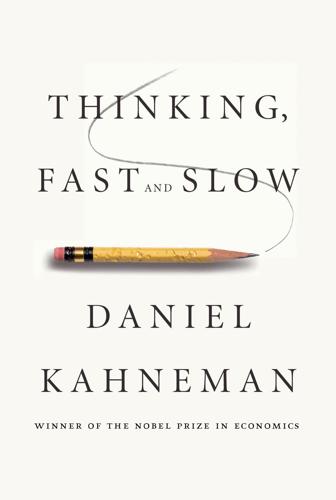
Thinking, Fast and Slow
by
Daniel Kahneman
Published 24 Oct 2011
And if you believe that there is a 30% chance that candidate X will be elected president, and an 80% chance that he will be reelected if he wins the first time, then you must believe that the chances that he will be elected twice in a row are 24%. The relevant “rules” for cases such as the Tom W problem are provided by Bayesian statistics. This influential modern approach to statistics is named after an English minister of the eighteenth century, the Reverend Thomas Bayes, who is credited with the first major contribution to a large problem: the logic of how people should change their mind in the light of evidence. Bayes’s rule specifies how prior beliefs (in the examples of this chapter, base rates) should be combined with the diagnosticity of the evidence, the degree to which it favors the hypothesis over the alternative.
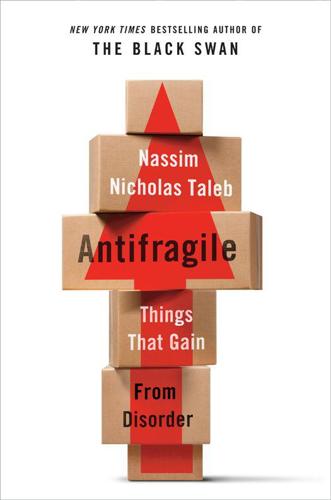
Antifragile: Things That Gain From Disorder
by
Nassim Nicholas Taleb
Published 27 Nov 2012
An extraordinary proportion of work came out of the rector, the English parish priest with no worries, erudition, a large or at least comfortable house, domestic help, a reliable supply of tea and scones with clotted cream, and an abundance of free time. And, of course, optionality. The enlightened amateur, that is. The Reverends Thomas Bayes (as in Bayesian probability) and Thomas Malthus (Malthusian overpopulation) are the most famous. But there are many more surprises, cataloged in Bill Bryson’s Home, in which the author found ten times more vicars and clergymen leaving recorded traces for posterity than scientists, physicists, economists, and even inventors.

Architects of Intelligence
by
Martin Ford
Published 16 Nov 2018
BAYESIAN is a term that can be generally be translated as “probabilistic” or “using the rules of probability.” You may encounter terms like Bayesian machine learning or Bayesian networks; these refer to algorithms that use the rules of probability. The term derives from the name of the Reverend Thomas Bayes (1701 to 1761) who formulated a way to update the likelihood of an event based on new evidence. Bayesian methods are very popular with both computer scientists and with scientists who attempt to model human cognition. Judea Pearl, who is interviewed in this book, received the highest honor in computer science, the Turing Award, in part for his work on Bayesian techniques.

The Stuff of Thought: Language as a Window Into Human Nature
by
Steven Pinker
Published 10 Sep 2007
The embarrassments for Hume’s two theories of causation (conjunction and counterfactuals) can be diagrammed as a family of networks in which the lines fan in or out or loop around, as in the diagram on the following page. One solution to the webbiness of causation is a technique in artificial intelligence called Causal Bayes Networks.120 (They are named for Thomas Bayes, whose eponymous theorem shows how to calculate the probability of some condition from its prior plausibility and the likelihood that it led to some observed symptoms.) A modeler chooses a set of variables (amount of coffee drunk, amount of exercise, presence of heart disease, and so on), draws arrows between causes and their effects, and labels each arrow with a number representing the strength of the causal influence (the increase or decrease in the likelihood of the effect, given the presence of the cause).
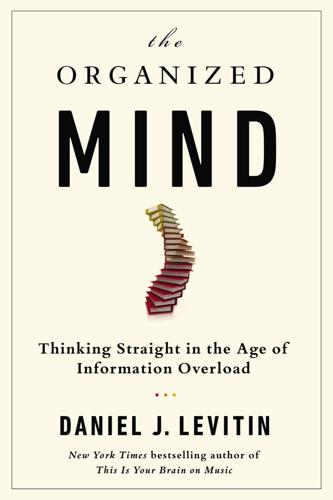
The Organized Mind: Thinking Straight in the Age of Information Overload
by
Daniel J. Levitin
Published 18 Aug 2014
It’s when they’re only mildly unlikely that our brains freeze up. Organizing our decisions requires that we combine the base rate information with other relevant diagnostic information. This type of reasoning was discovered in the eighteenth century by the mathematician and Presbyterian minister Thomas Bayes, and bears his name: Bayes’s rule. Bayes’s rule allows us to refine estimates. For example, we read that roughly half of marriages end in divorce. But we can refine that estimate if we have additional information, such as the age, religion, or location of the people involved, because the 50% figure holds only for the aggregate of all people.
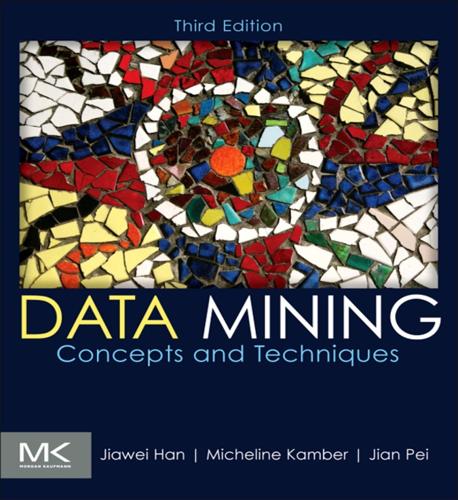
Data Mining: Concepts and Techniques: Concepts and Techniques
by
Jiawei Han
,
Micheline Kamber
and
Jian Pei
Published 21 Jun 2011
This assumption is called class-conditional independence. It is made to simplify the computations involved and, in this sense, is considered “naïve." Section 8.3.1 reviews basic probability notation and Bayes’ theorem. In Section 8.3.2 you will learn how to do naïve Bayesian classification. 8.3.1. Bayes’ Theorem Bayes’ theorem is named after Thomas Bayes, a nonconformist English clergyman who did early work in probability and decision theory during the 18th century. Let X be a data tuple. In Bayesian terms, X is considered “evidence.” As usual, it is described by measurements made on a set of n attributes. Let H be some hypothesis such as that the data tuple X belongs to a specified class C.